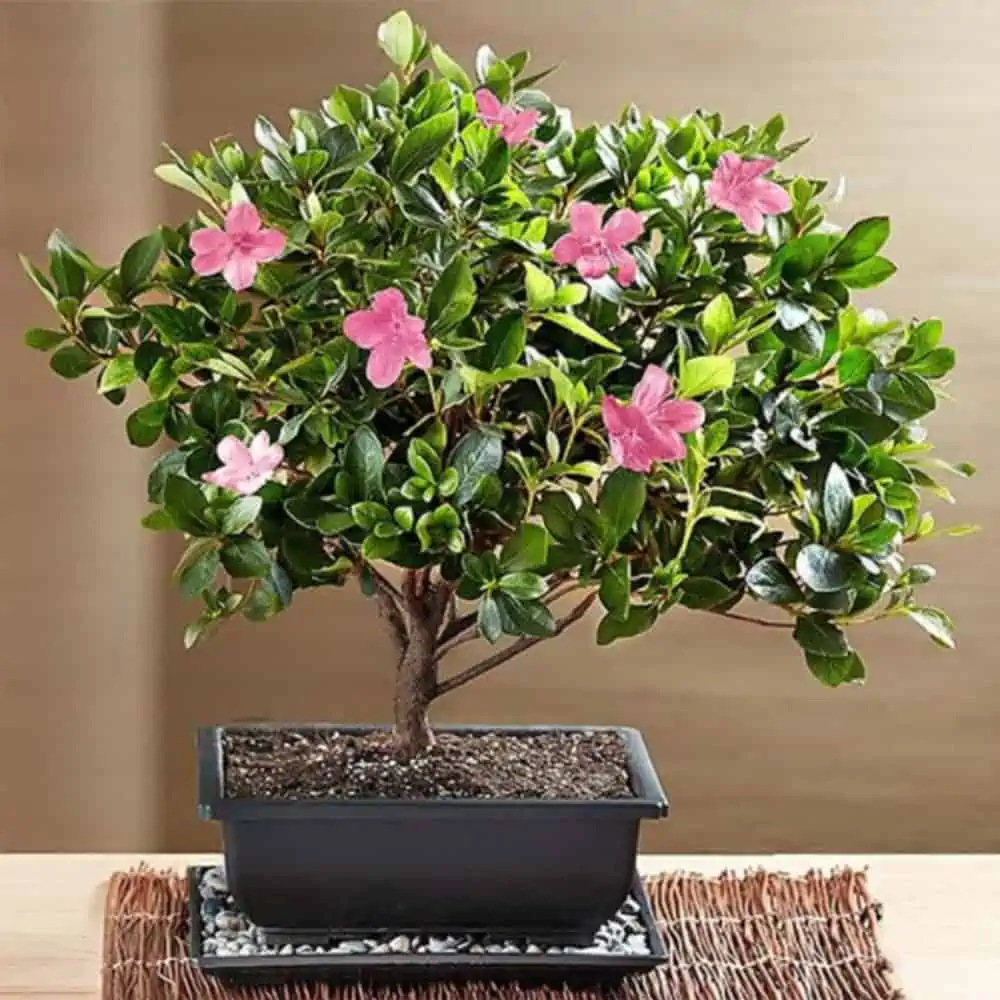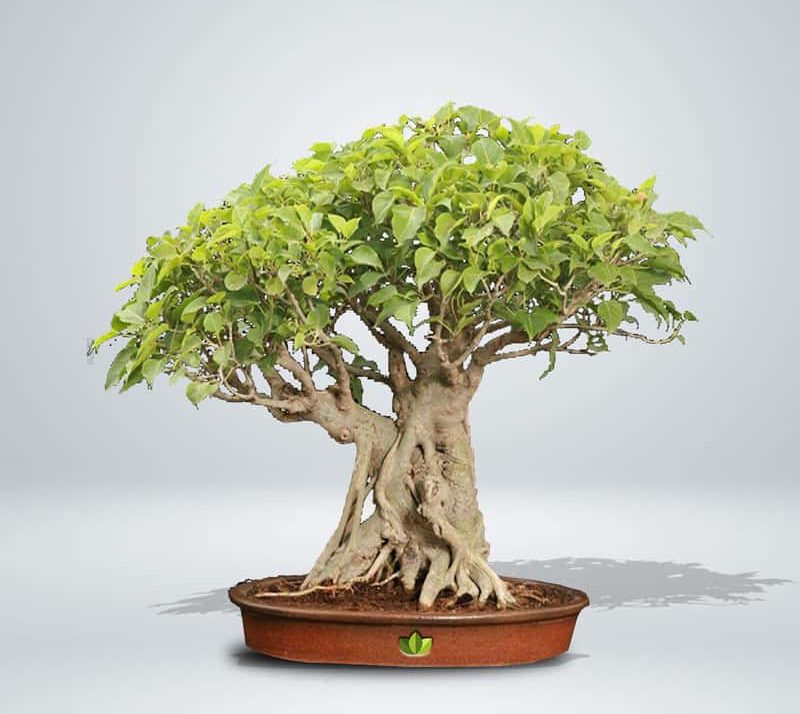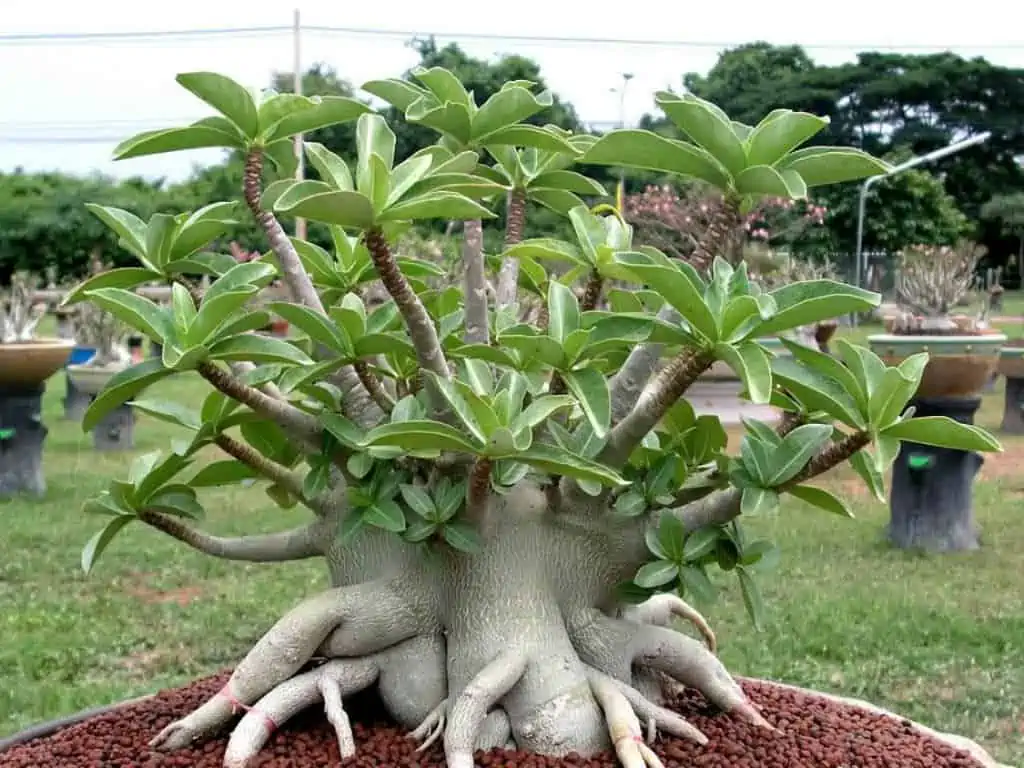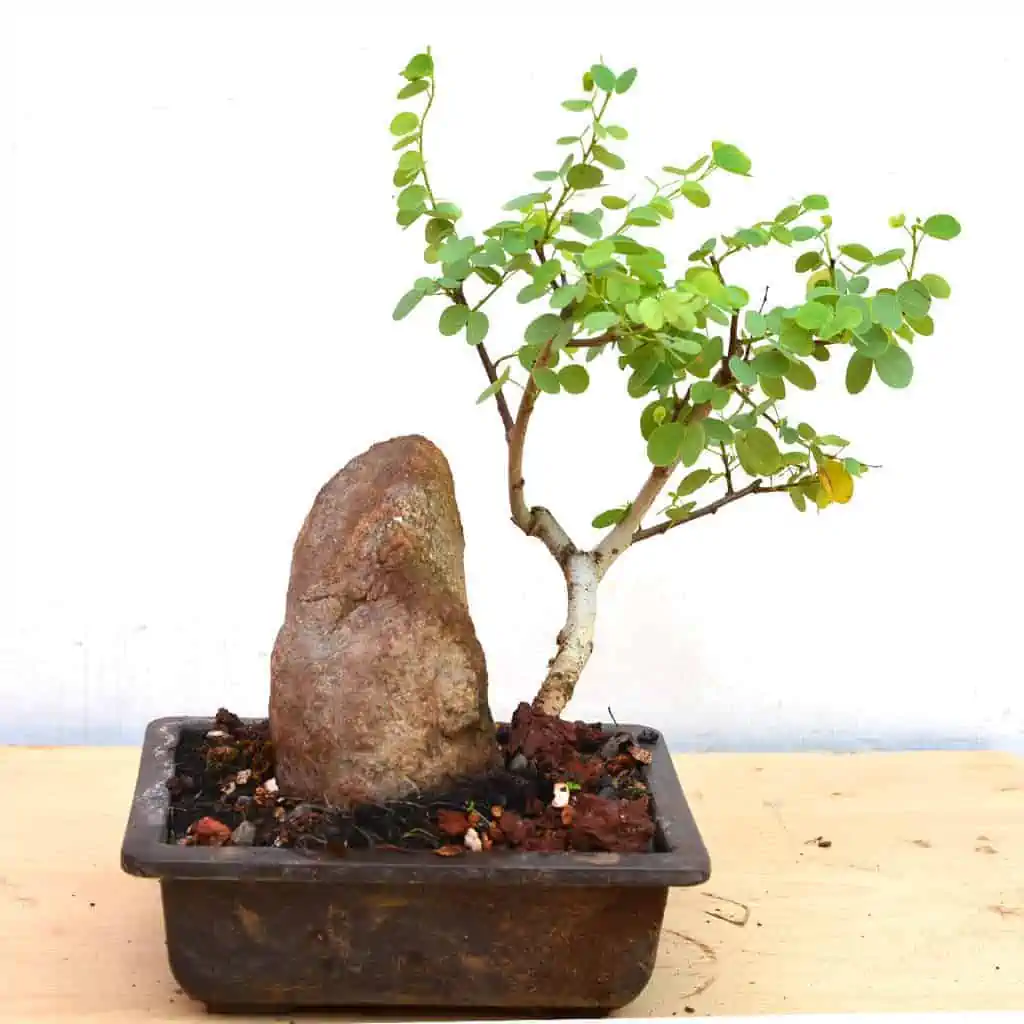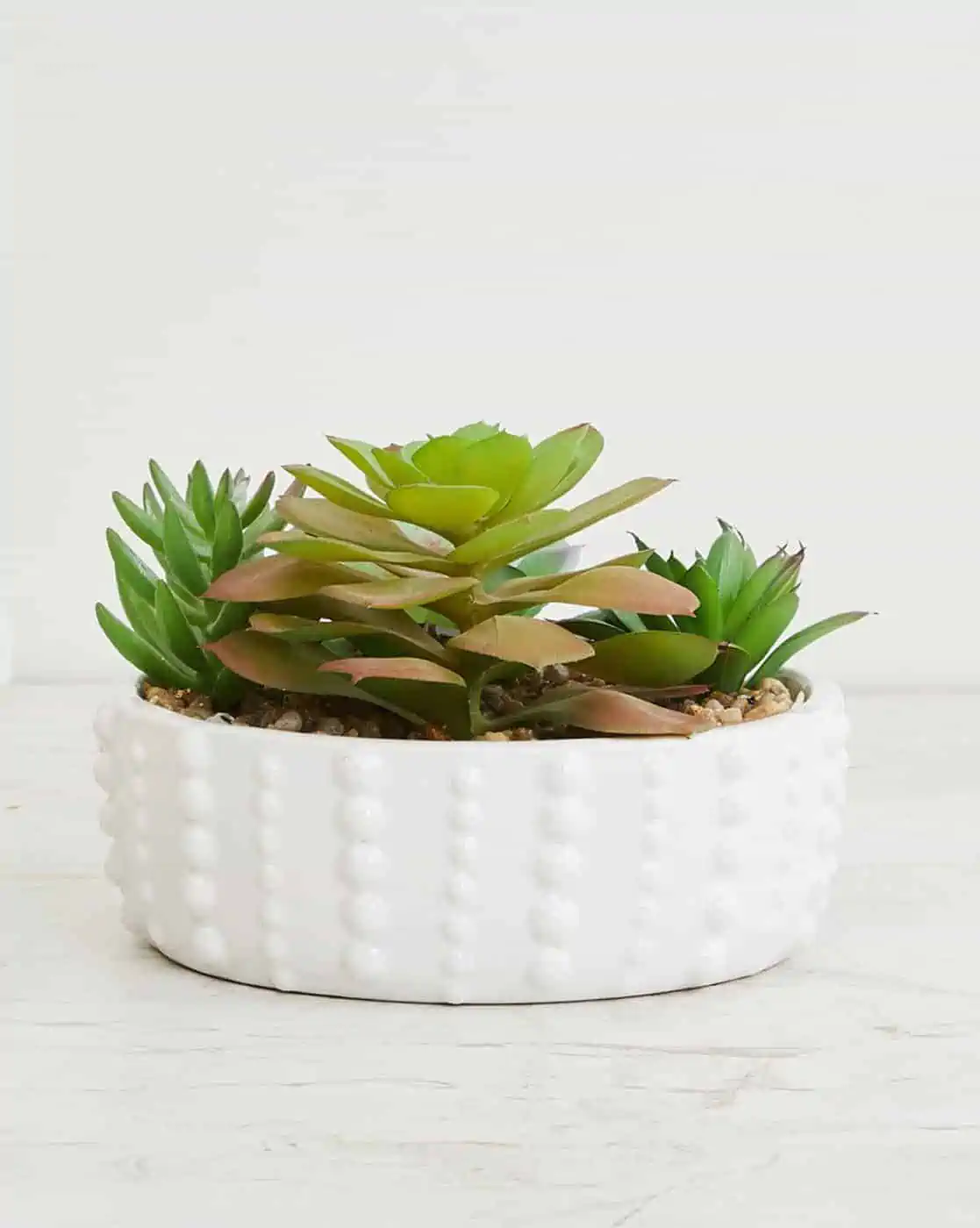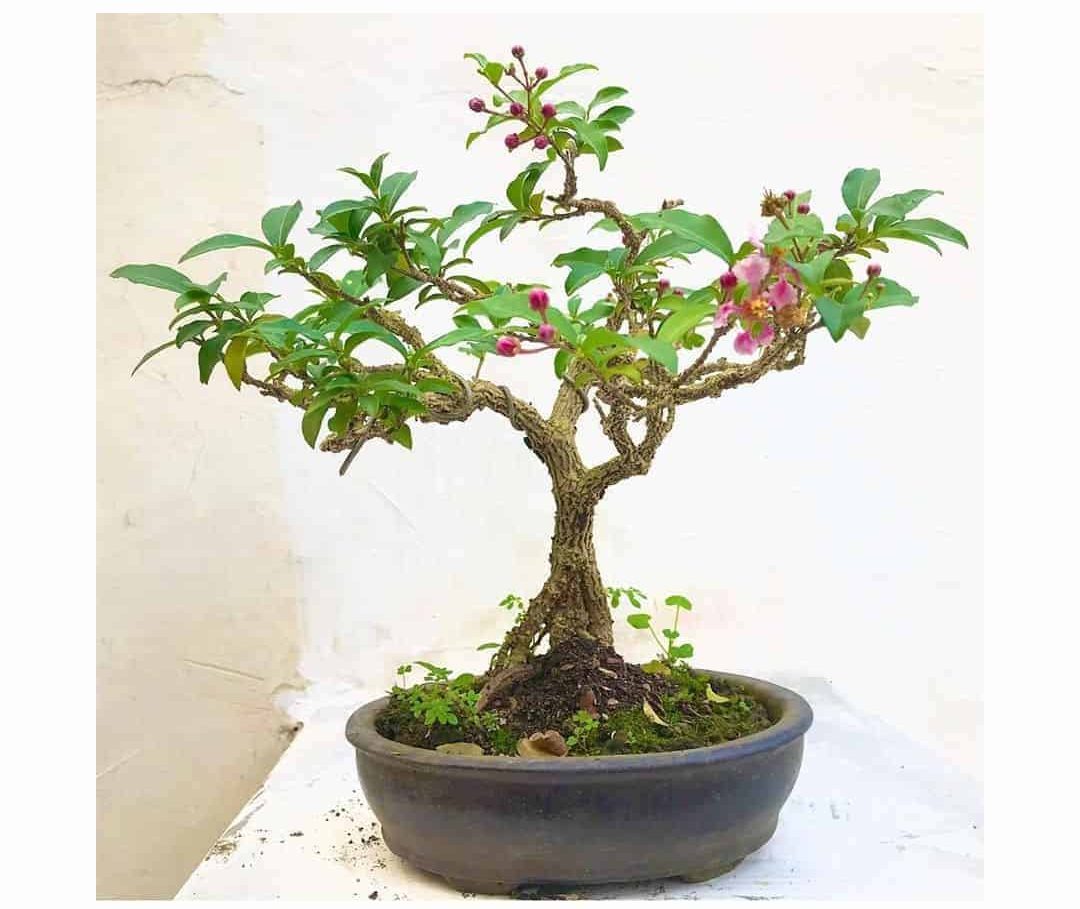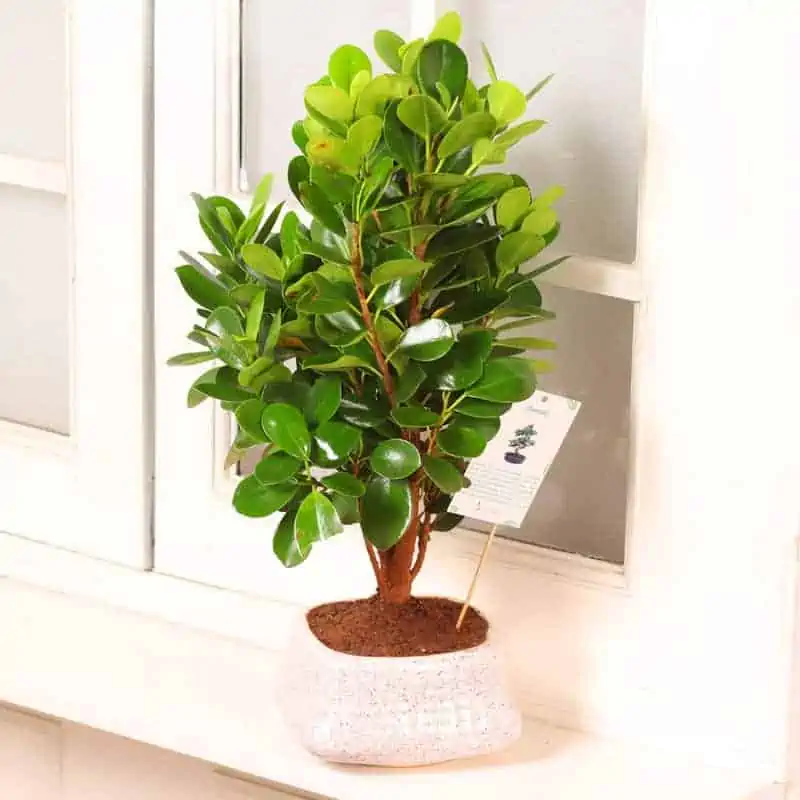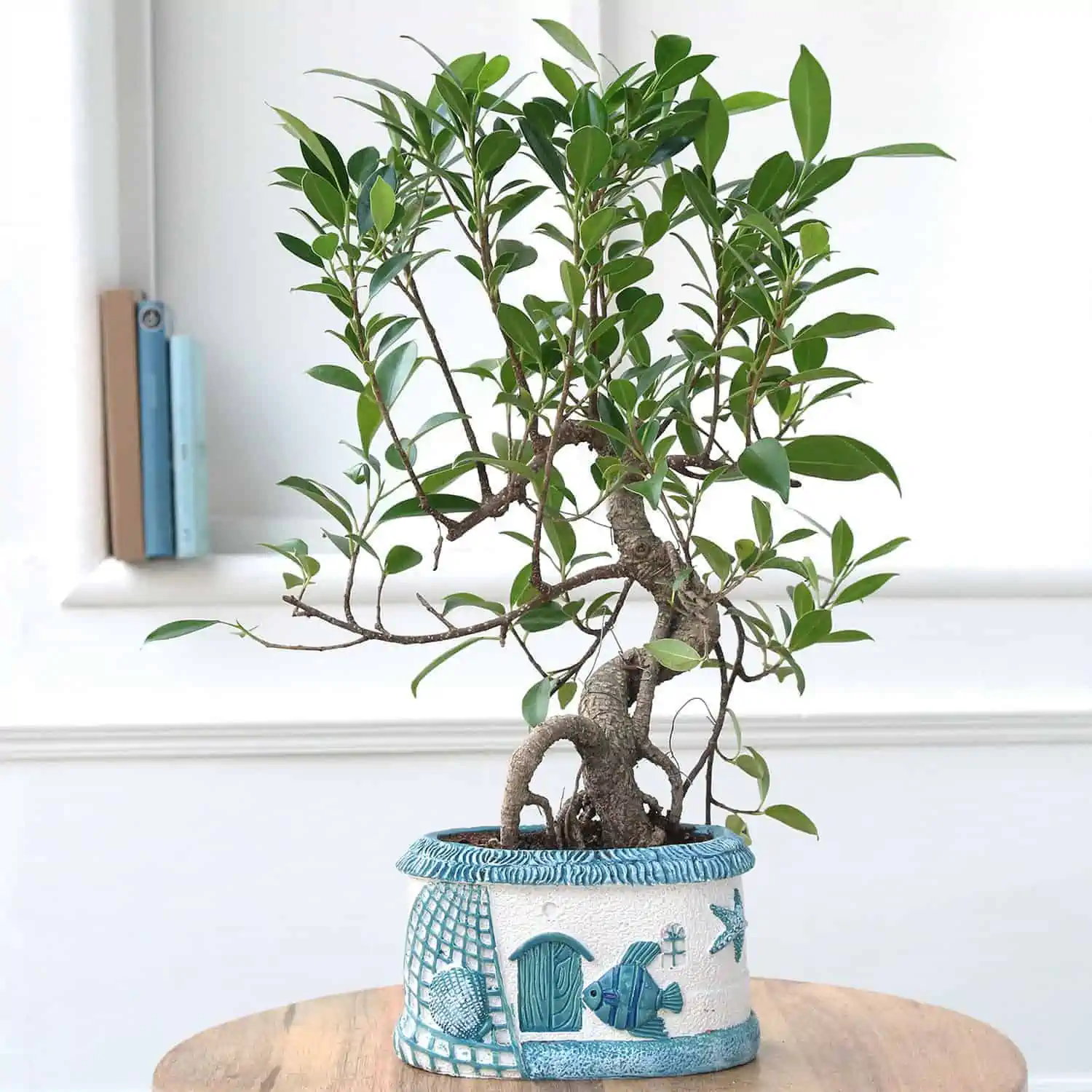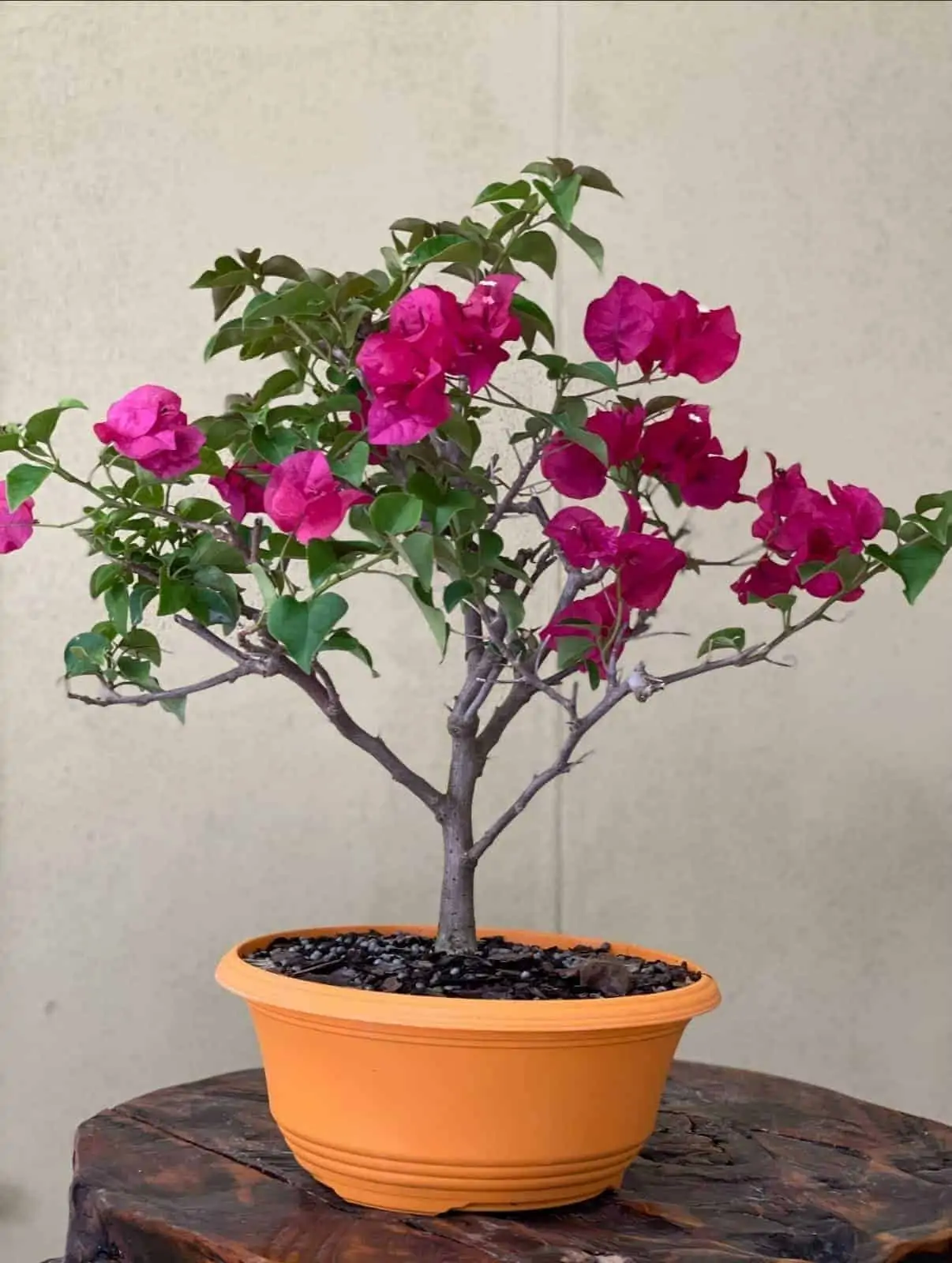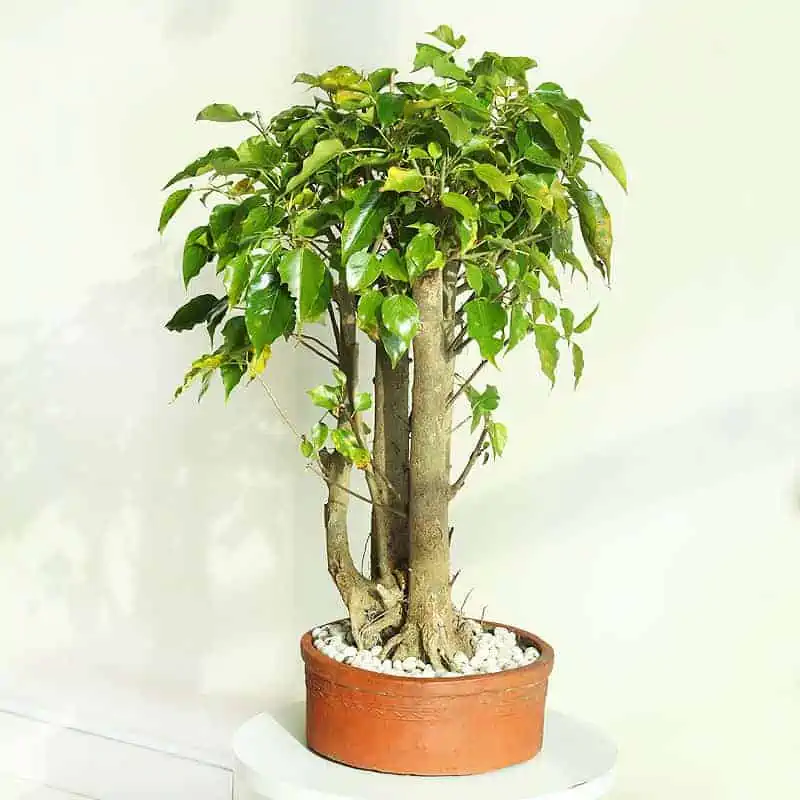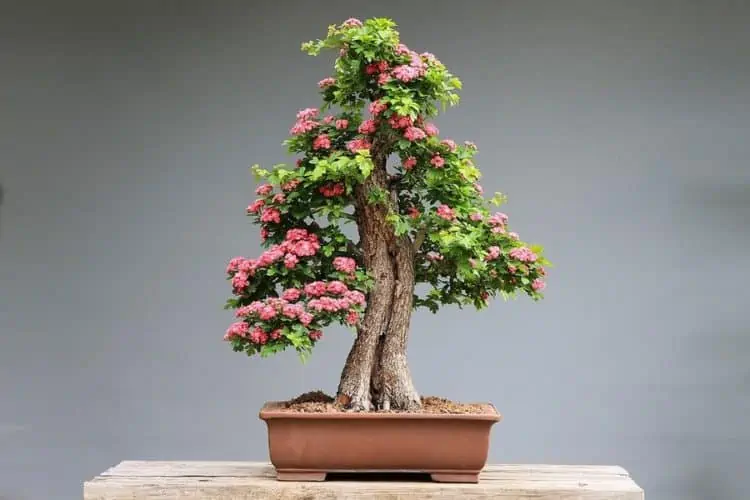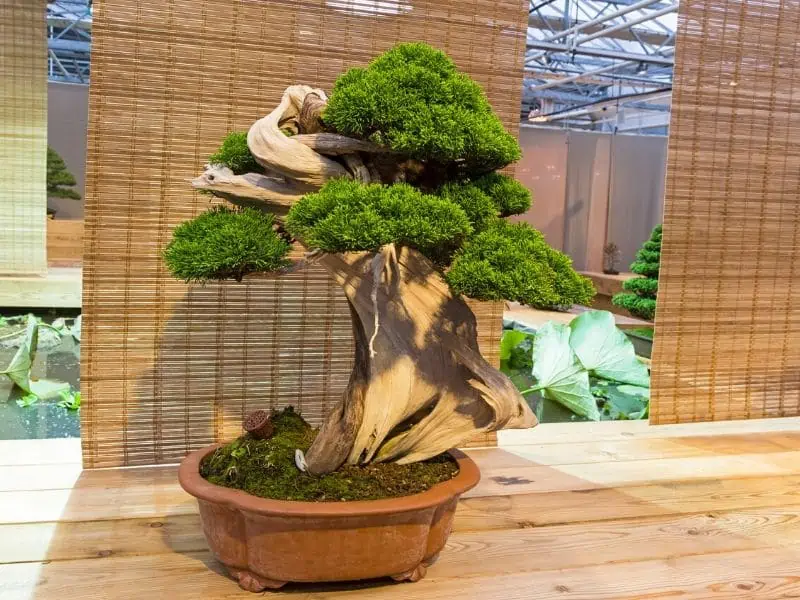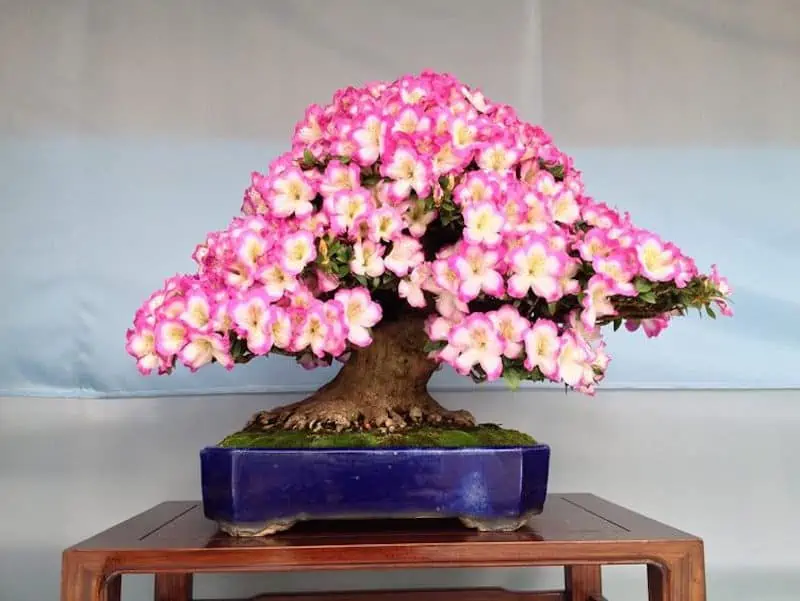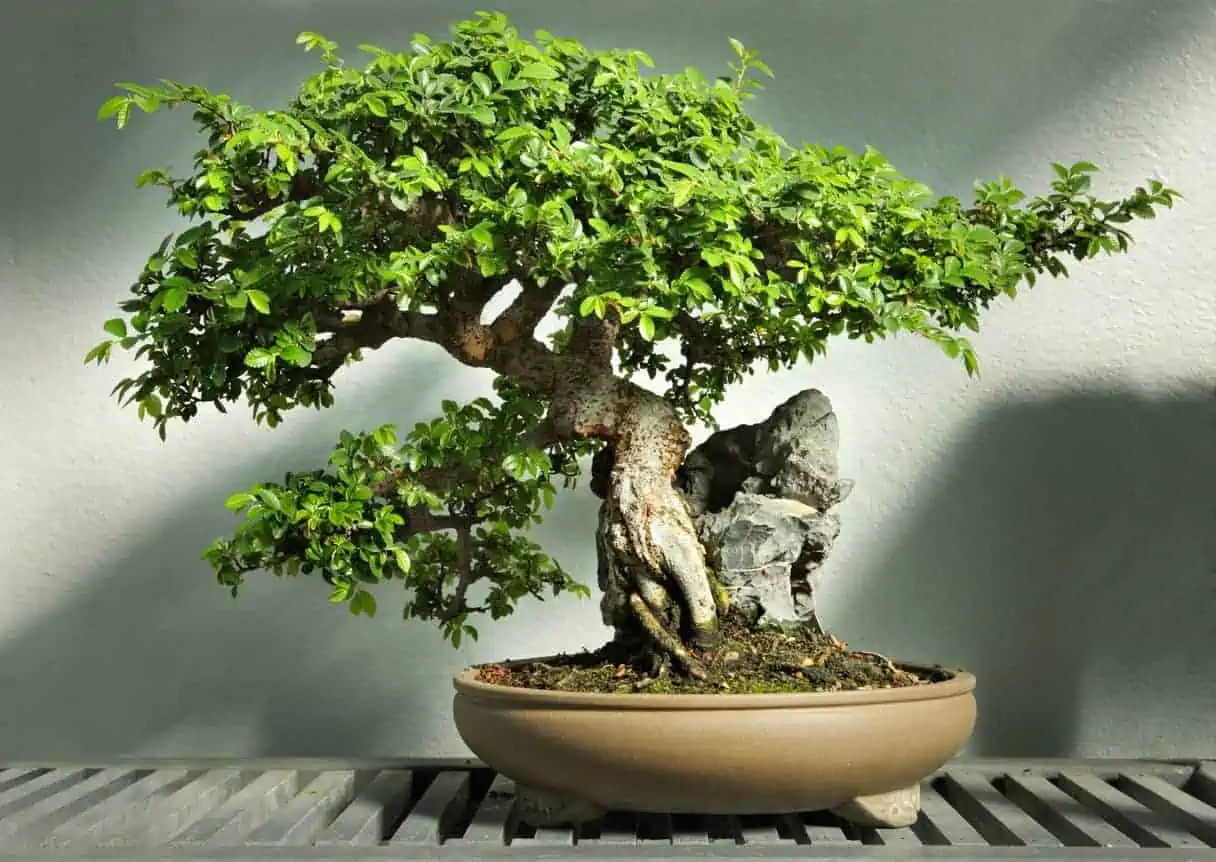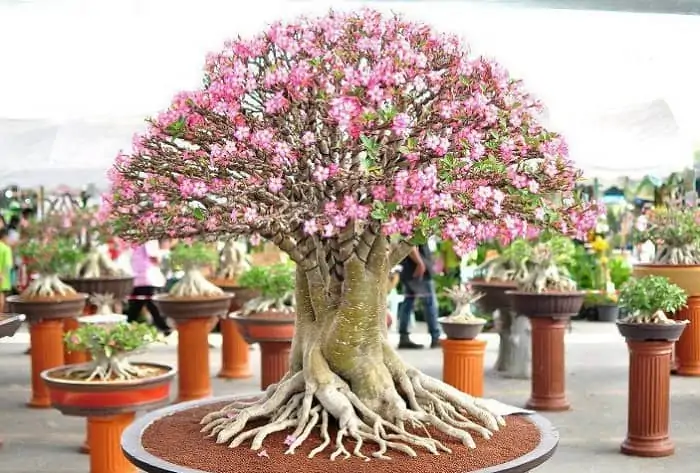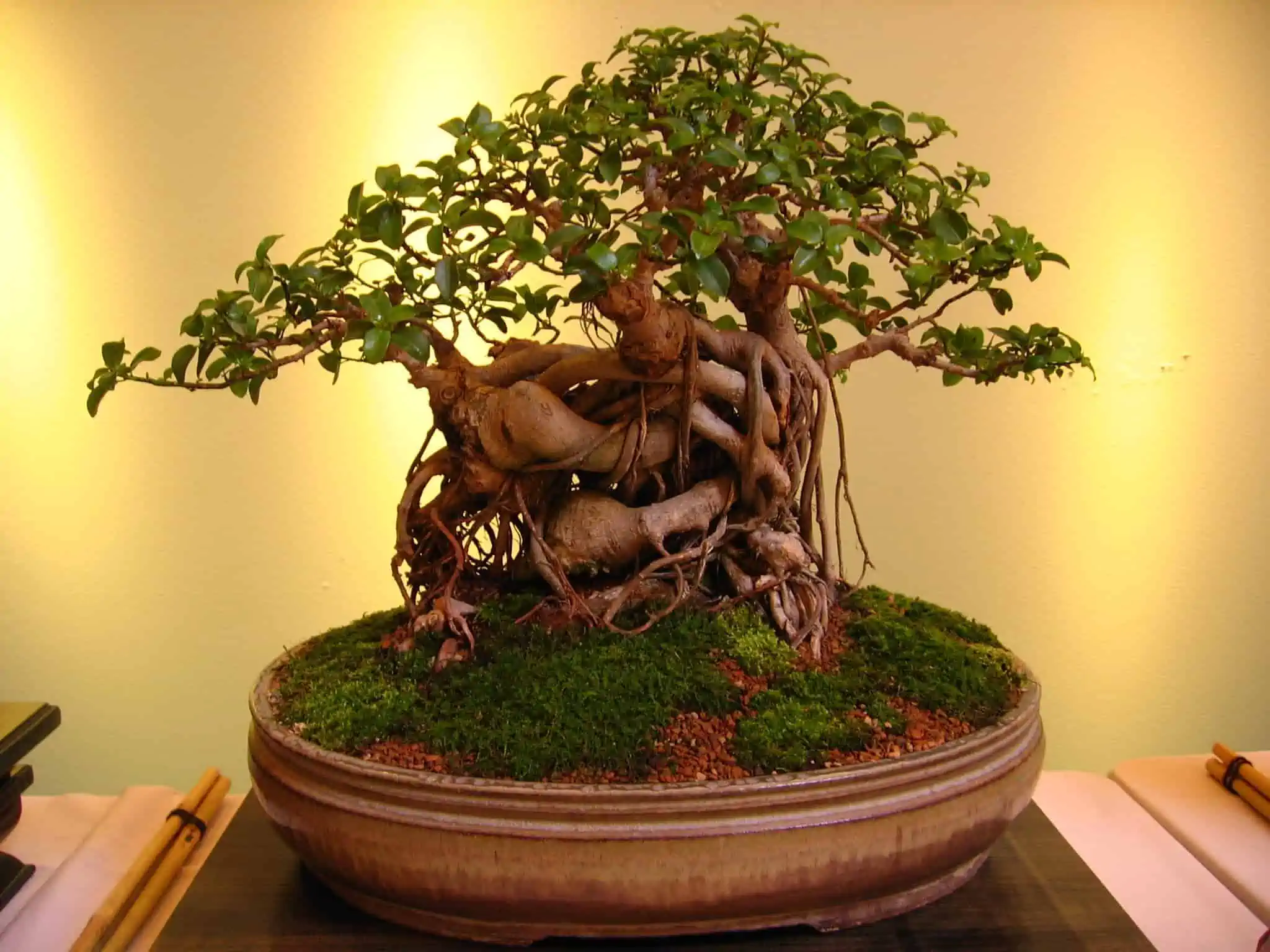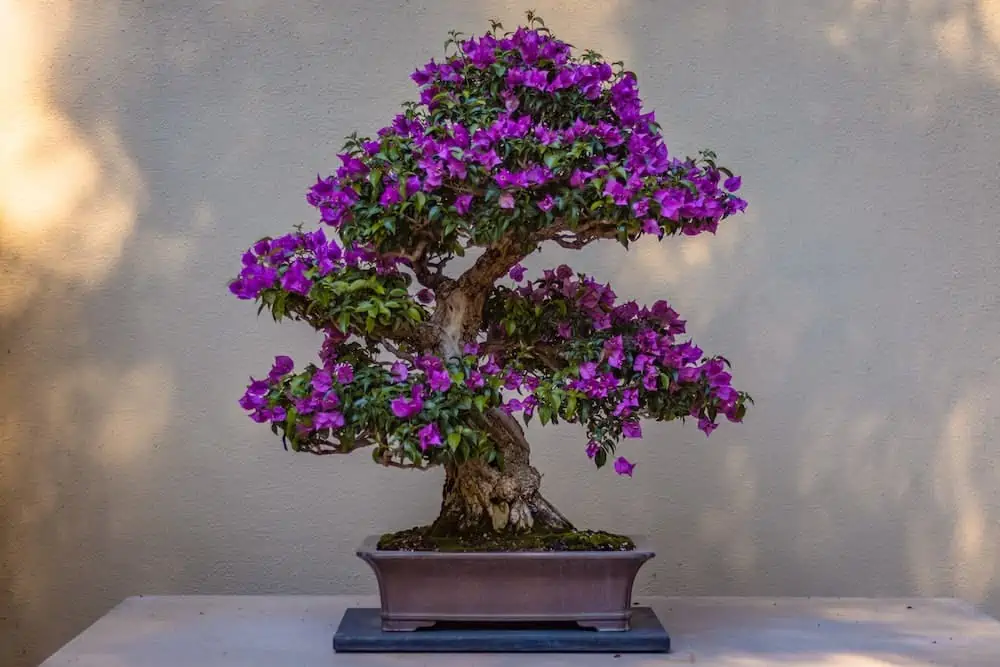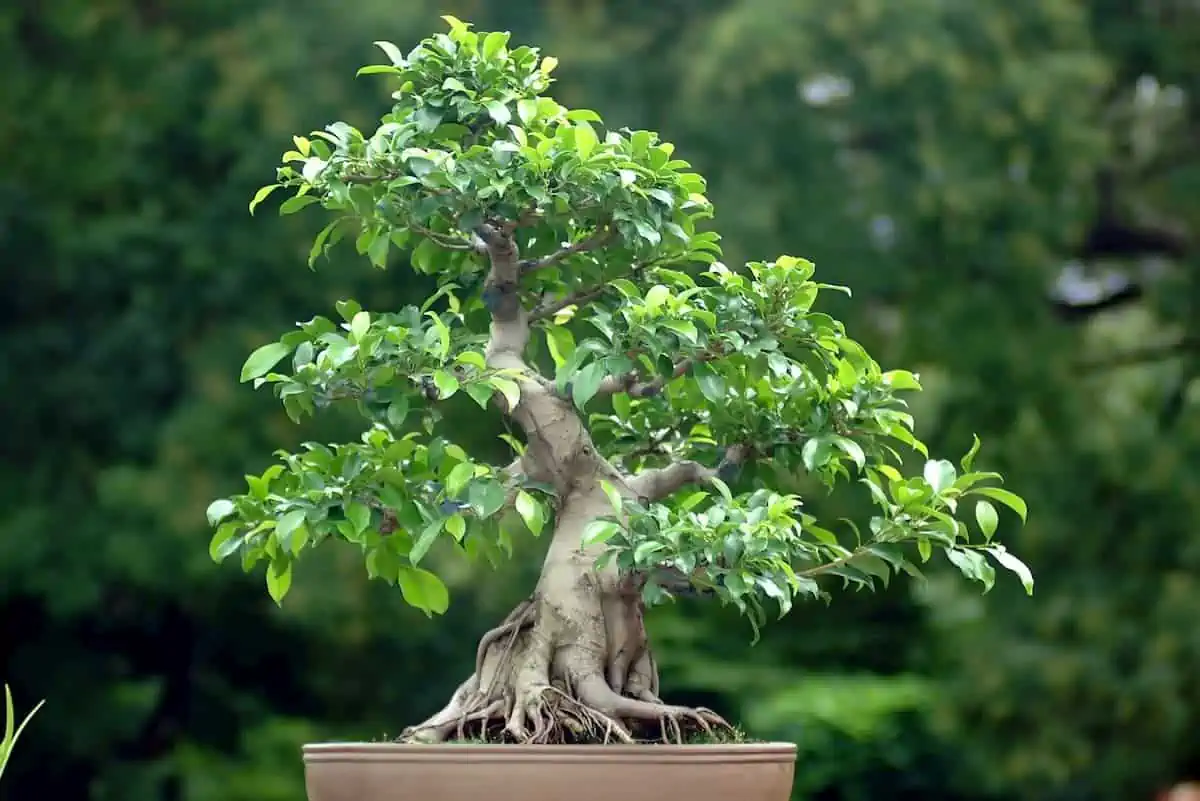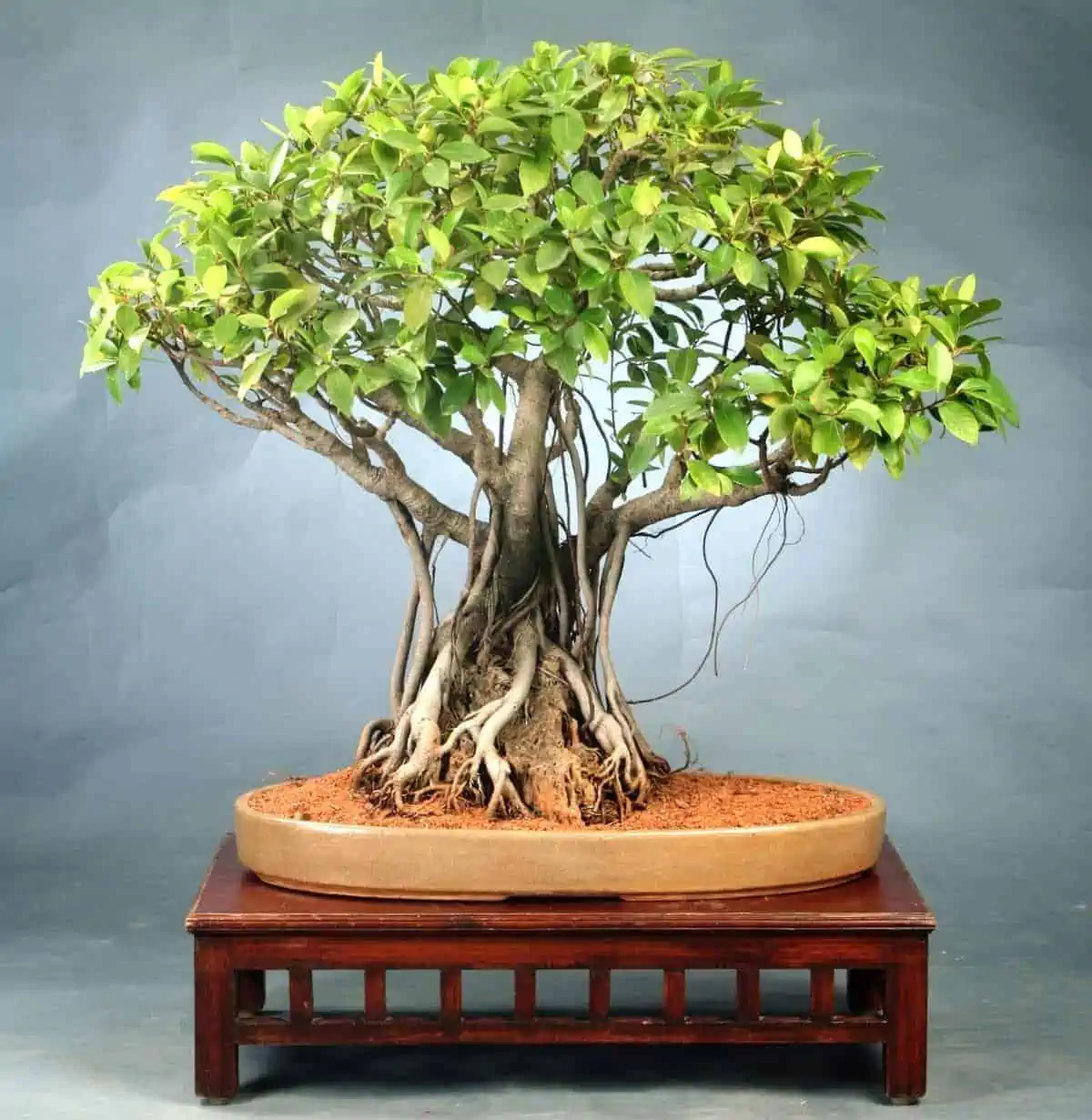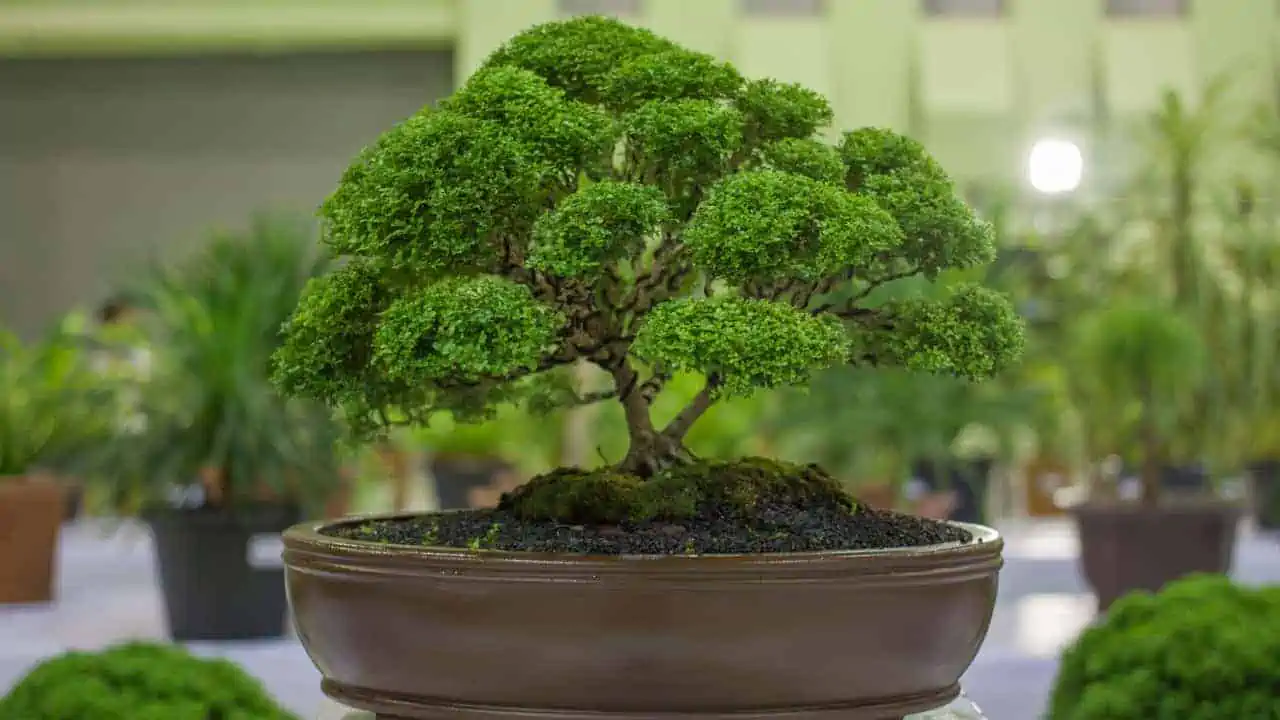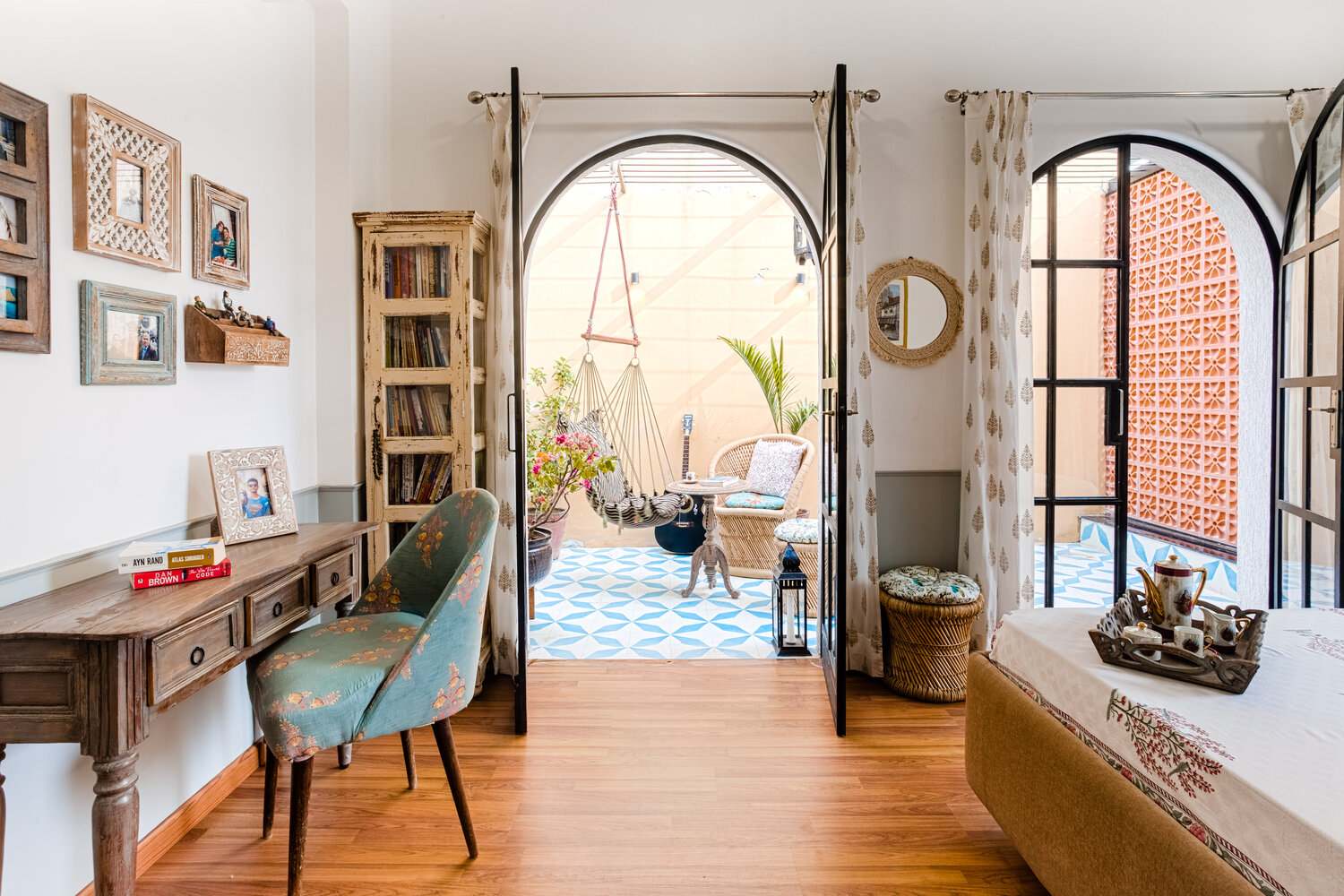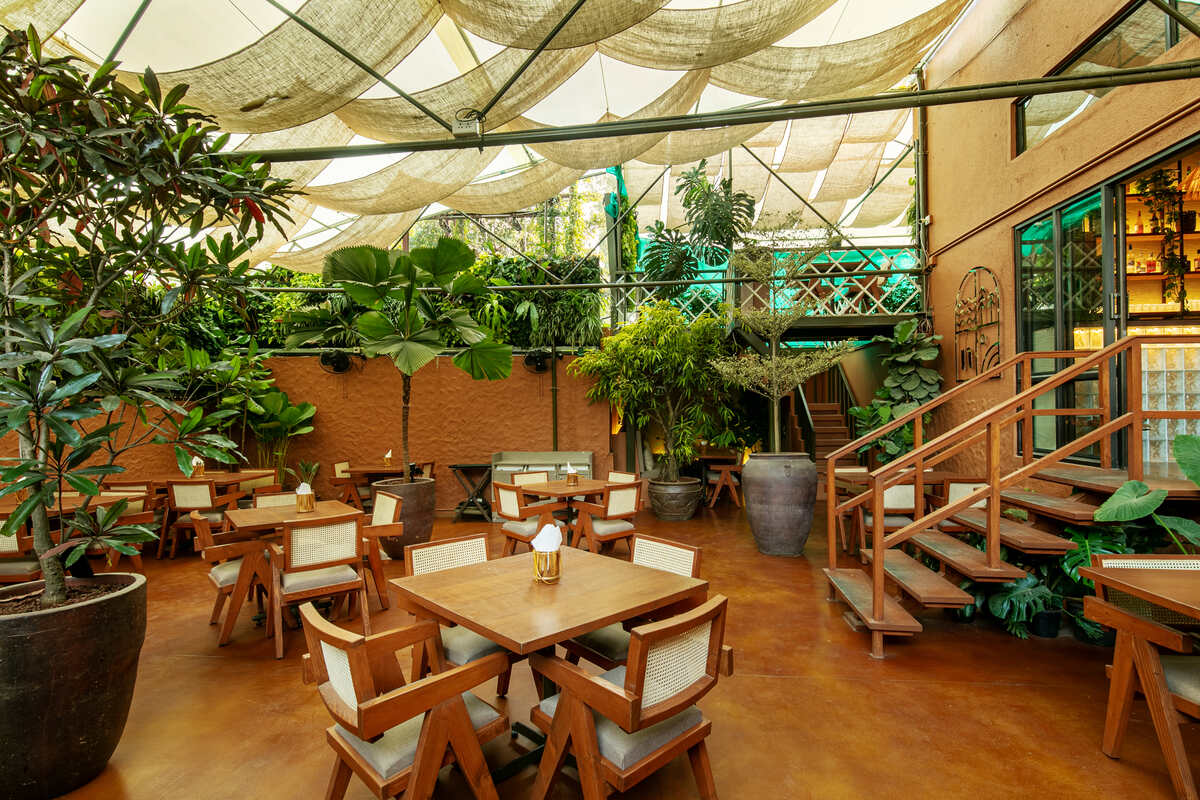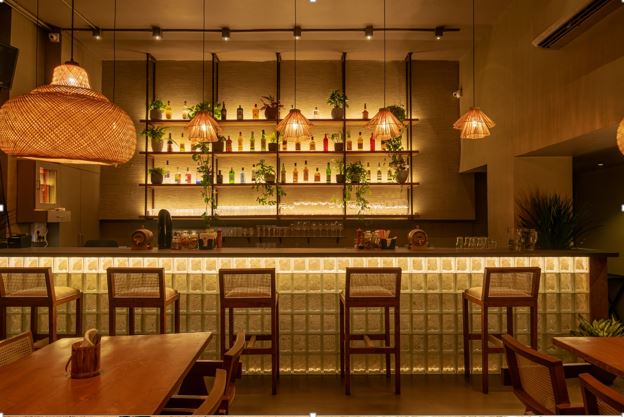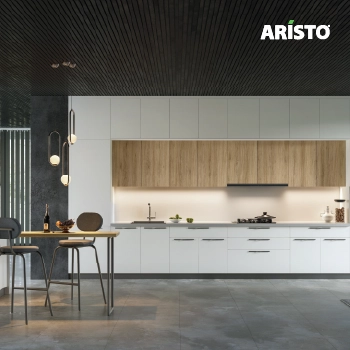A bonsai is a living art form that cultivates a miniature version of a tree to mimic its full-sized counterpart in a small planter. They may appear to be dwarfs, but they are actually trained, pruned, and maintained to appear small and old. Bonsai trees are a natural beauty that can be placed both indoors and outdoors in a decorative planter to uplift the home’s aesthetics at a minimum price range.
Any perennial, woody-stemmed, or shrub with true branches can be transformed into a bonsai. You can pick bonsai species that enhance the aesthetic value of your home, such as Juniper, Ficus, Jade, etc. They are also easier to train and make a unique feature in your home or garden.
Bonsai are delicate plants with special needs and are often difficult to maintain. Their needs are very different from regular houseplants and vary with species in terms of light, soil, water, and temperature. However, most of them require shallow pots, daily watering, regular pruning, and warm weather to grow and flourish.
A perfectly shaped and styled bonsai tree adds an interesting layer of both indoor and outdoor decor. You can incorporate styling techniques like crown pruning, wiring, clamping, etc., to make your bonsai look like a work of art.
In this article, we have talked about almost everything you need to know in terms of species, growth requirements, and styling if you want to get started with bonsai cultivation. We have also provided you with a list of bonsai tree buy options under every price range. This will help you master the art of bonsai in no time. So, if you plan to take up the art of growing these trees or are just curious about this miniature plant cultivation, this article is for you.
Contents
- 1 Our top bonsai tree recommendations under multiple price ranges (Buy here!)
- 1.1 Winni Wonderful Bonsai
- 1.2 Wild Roots Peepal Tree Bonsai
- 1.3 Newness Plant Arabicum Adenum
- 1.4 myBageecha Bonsai Bauhinia Tomentosa
- 1.5 Homecentre Gardenia Bonsai in Ceramic Pot
- 1.6 GreenParadise Japanese Cherry Blossom Bonsai Tree
- 1.7 Flower Aura Stunning Panda Bonsai
- 1.8 Ferns N Petals Ficus Iceland Bonsai Tree In Sea House Planter
- 1.9 Abana Homes Bougainvillea Bonsai 6 Yrs
- 1.10 Ashiyana Store Paras Peepal Bonsai
- 2 What is Bonsai?
- 3 Uses and benefits of bonsai trees
- 4 Popular bonsai tree species
- 5 Growth and cultivation of bonsai tree at home
- 6 Bonsai tree styling and shaping techniques
- 7 Caring for bonsai trees
- 8 Bonsai tree decor ideas (Image gallery)
- 9 Watch this video: How to create a Bonsai tree (9 mins 44 secs)
- 10 FAQs
- 11 Conclusion
Our top bonsai tree recommendations under multiple price ranges (Buy here!)
Winni Wonderful Bonsai
Experience the enchanting beauty of nature with the Winni Wonderful Bonsai plant, a captivating masterpiece of greenery and tranquility.
| B U Y H E R E |
Wild Roots Peepal Tree Bonsai
This is a captivating masterpiece that combines the untamed beauty of a wild Peepal tree with the artistry of bonsai cultivation.
| B U Y H E R E |
Newness Plant Arabicum Adenum
This is a unique botanical wonder that exudes elegance and charm with its beauty and distinctive features.
| B U Y H E R E |
myBageecha Bonsai Bauhinia Tomentosa
This miniature masterpiece embodies the grace and allure of nature, perfect for adding a touch of serenity to any space.
| B U Y H E R E |
Homecentre Gardenia Bonsai in Ceramic Pot
The Homecentre Gardenia Bonsai in Ceramic Pot will enhance your living space, bringing tranquility and elegance to your home.
| B U Y H E R E |
GreenParadise Japanese Cherry Blossom Bonsai Tree
This particular bonsai is exceptionally easy to cultivate, making it an ideal choice for both beginners and experienced growers alike. With its evergreen foliage, adorned with exquisite pink flowers and delightful edible red cherry fruits, the Cherry Blossom Bonsai is a captivating sight to behold.
| B U Y H E R E |
Flower Aura Stunning Panda Bonsai
The exquisite Ficus Panda Bonsai, elegantly placed in a ceramic white Dotted Bonsai Tray, will not only enhance your home decor but also captivate with its unique charm.
| B U Y H E R E |
Ferns N Petals Ficus Iceland Bonsai Tree In Sea House Planter
The striking appearance and resilience of this Bonsai tree and planter make it a popular choice among plant enthusiasts. Also, it can be an excellent addition to homes and offices alike.
| B U Y H E R E |
Abana Homes Bougainvillea Bonsai 6 Yrs
This stunning bonsai tree, carefully cultivated for 6 years, is available for indoors at an affordable price. Moreover, this exquisite bonsai showcases the vibrant and enchanting beauty of the Bougainvillea, with its cascading blossoms and lush foliage, creating a captivating centerpiece for any space.
| B U Y H E R E |
Ashiyana Store Paras Peepal Bonsai
This carefully nurtured masterpiece brings the sacred elegance of the Peepal tree into your living space, radiating tranquility and natural beauty.
| B U Y H E R E |
What is Bonsai?
Bonsai is a Japanese term that means a tree planted in a container. It is the art of growing miniature trees in small containers, which started in China and later developed under the influence of Japanese Zen Buddhism. Bonsai trees are trained to sustain themselves in a compact space and size.
Uses and benefits of bonsai trees
There are a number of benefits associated with bonsai trees. These trees are stunning and can improve the aesthetics of any location where they are placed. It adds life to the atmosphere inside the homes. Bonsai trees are good at eliminating harmful toxins from the air, along with reducing stress levels. If you want to give someone a meaningful gift or add a distinctive plant to your home decor, you can simply find a bonsai tree under your preferred price range from our list.
Popular bonsai tree species
There are countless bonsai tree species available in the market at different price ranges. Here, we have mentioned some of the most popular bonsai species that you can totally consider:
Ficus
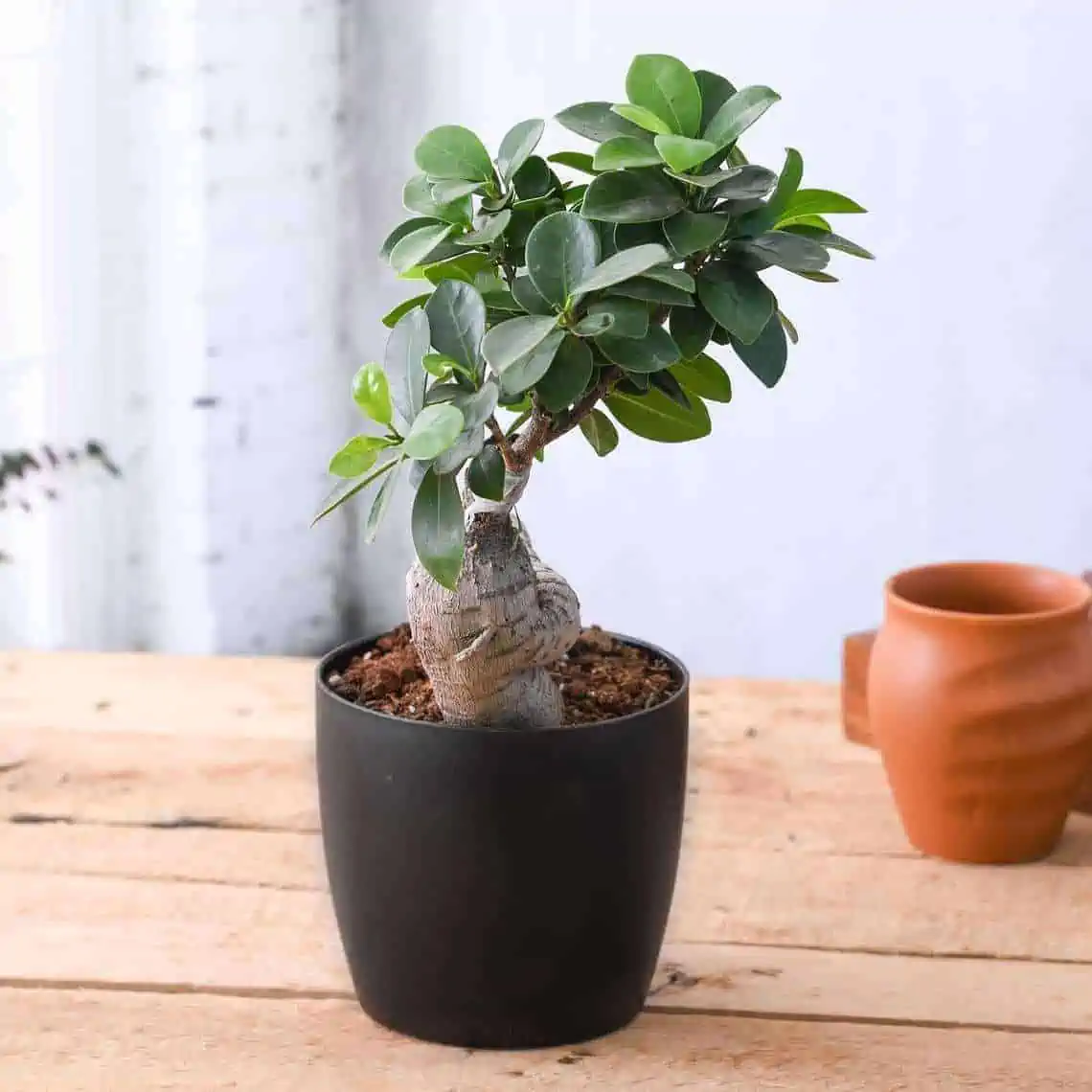
Image Source: Nurserylive
Ficus is a versatile and popular tree that belongs to the family of mulberry plants or Moraceae. There are approximately 850 varieties of ficus, among which Retusa, Ginseng, and Benjamina are the most popular. Also, Ficus is a hardy and forgiving plant when it comes to care, which makes it suitable for bonsai beginners.
Juniper
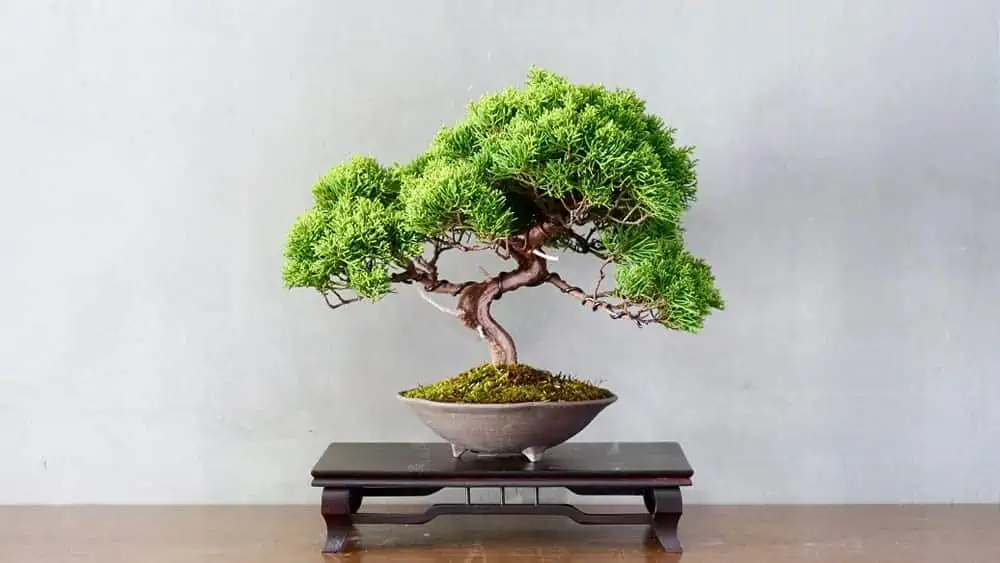
Image Source: Plantly
Juniper is a dazzling evergreen coniferous tree that belongs to the cypress family. Their needle-like and scale-like foliage fit nicely with the miniature aesthetic of bonsai. Junipers come in 50-70 different species, and all of them can be grown as an indoor bonsai tree or in humid conditions without being repotted for years.
Japanese Maple
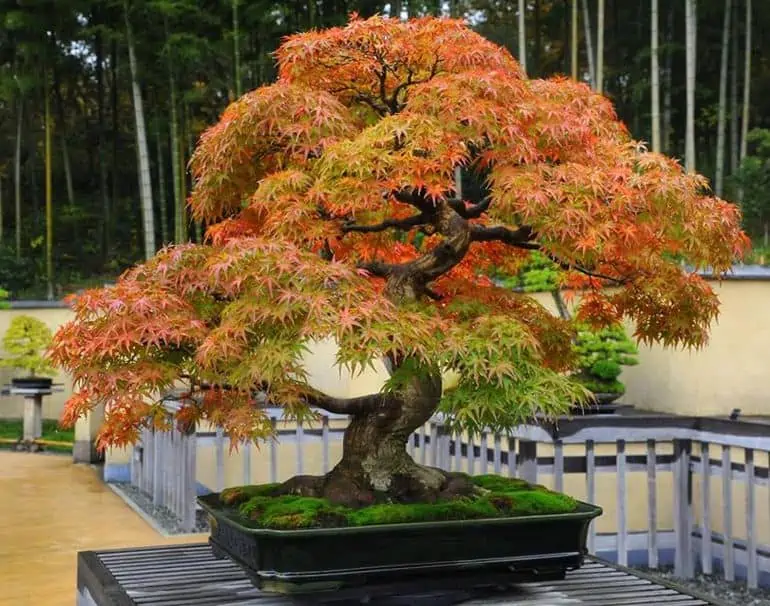
Image Source: Bonsai Bark
The Japanese maple is a beautiful deciduous hardwood tree known for its burgundy or green leaves that turn bright yellow, red, and orange during fall. They are beginner-friendly and are capable of bringing elegance and vitality to any corner of your house. Japanese maple bonsai tree is suitable for outdoors and forms a very nice canopy of striking colours that is asymmetrical but uniform.
Dwarf Jade
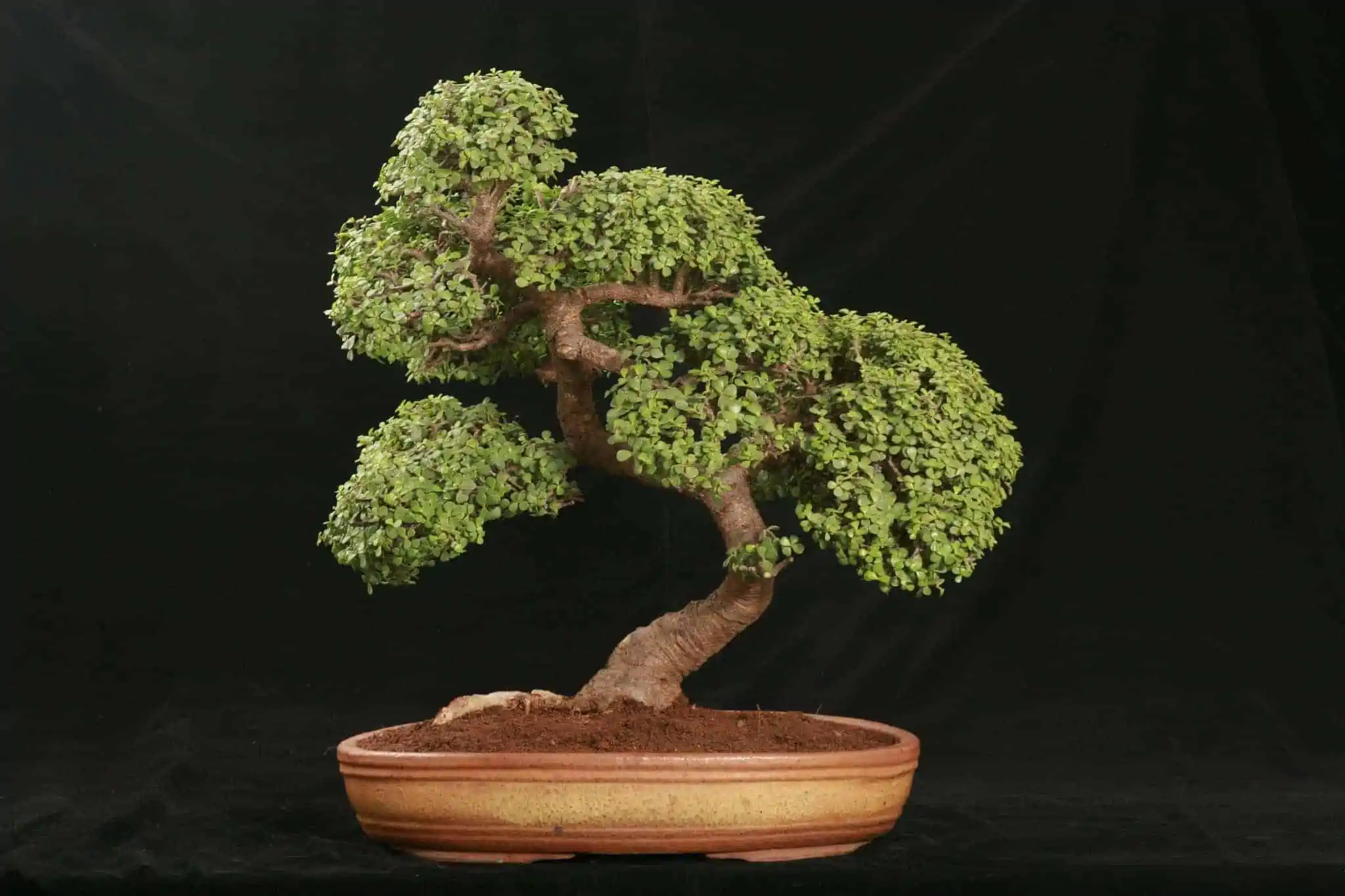
Image Source: Bonsai Tree Gardener
Dwarf jade is a semi-evergreen softwood tree that belongs to the succulent family. They have glossy oval-shaped leaves with smaller foliage and an elegant brown stem, which distinguishes them from the common jade variety. Dwarf jades are excellent indoor plants but require direct sunlight for the most part of the day.
| Also see: Succulent plants: 10 Best types & tips to grow indoors (Buy online!) |
Azalea
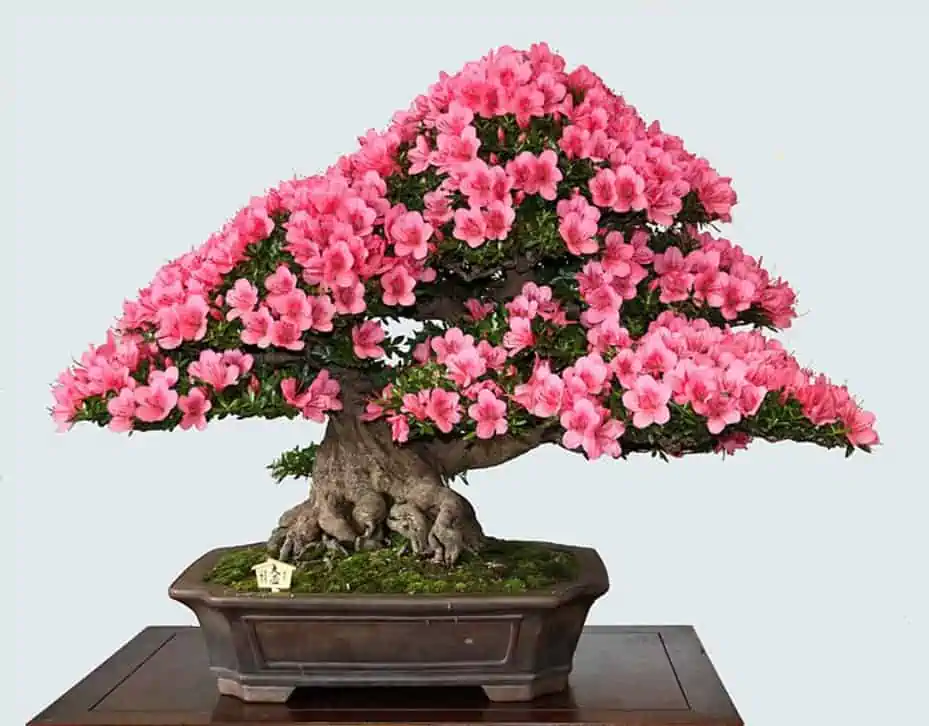
Image Source: About Bonsai
The Azalea belongs to the Rhododendron genus that adds both bloom and colour to the bonsai art. There are approximately 1000 varieties of azalea, among which the Satsuki azalea, Kurume azalea, and Kaempferi azalea are popular for bonsai. Azaleas are known for their one-of-a-kind look, with blossoms in red, white, and pink.
Bougainvillaea
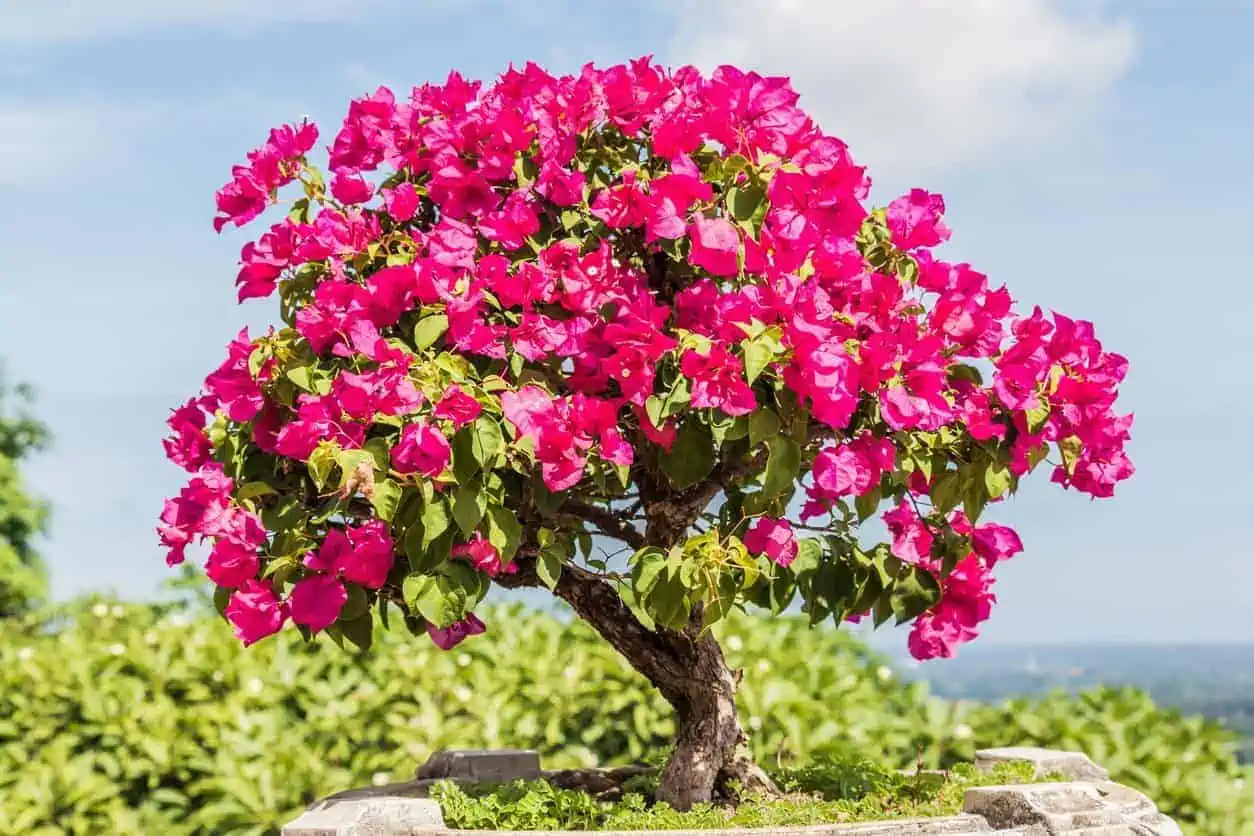
Image Source: Gardening Know How
Bougainvillaea is an evergreen woody vine with trumpet-shaped flowers that grow in clusters of trees in purple or magenta colours. In reality, what appears to be enchanting blossoms are not flowers but the leaves of this shrub. Bougainvillaea bonsai requires plenty of direct sunlight to grow and thrive.
| Also see: 21 Affordable large planter & pot designs you must buy online! |
Chinese Elm
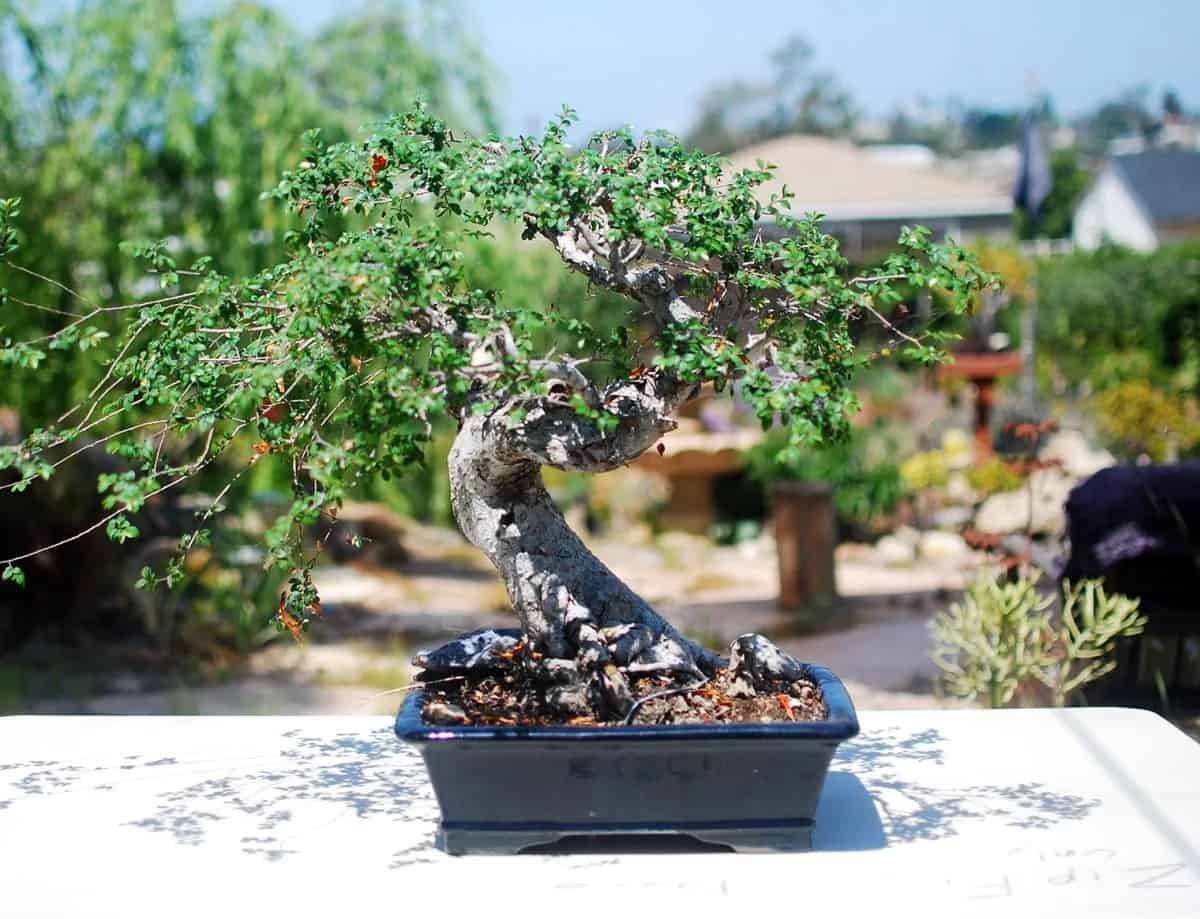
Image source: Mindyourdirt.com
Chinese Elm is one of the most popular options among those who are just starting to learn bonsai. This tree requires a warm environment with moist soil. Chinese elm bonsai has a solid multi-coloured bark. The leaves of this tree look textured and give the tree a dense look. With regular pruning sessions and other caring practices, Chinese Elm bonsai can last for decades.
Dwarf Boxwood
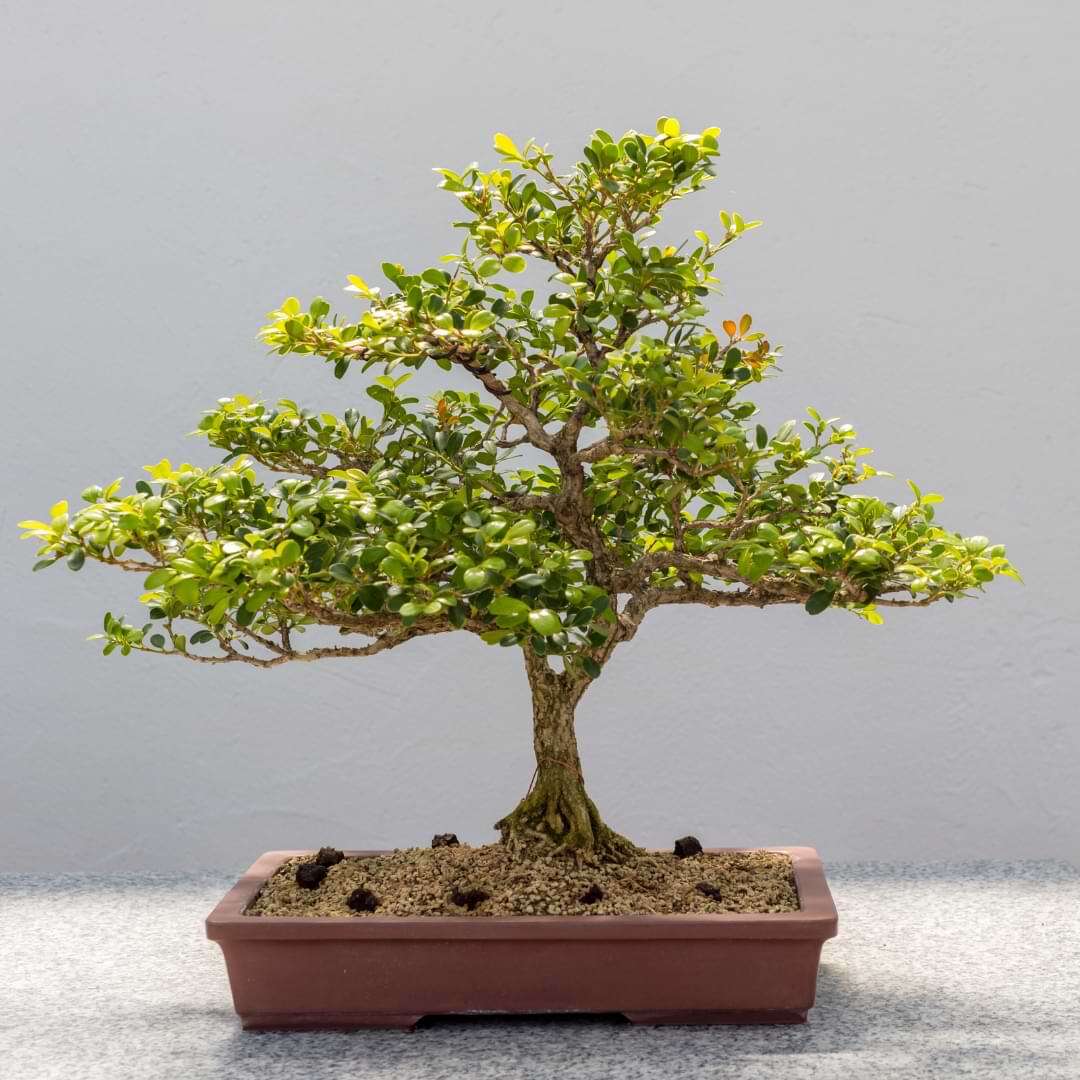
Image source: Bonsairesourcecenter.com
The Dwarf Boxwood bonsai tree, unlike most other bonsai trees, is known for its adaptability, as it can be shaped and pruned extensively without causing damage. It can tolerate both sunlight and shade well. This plant requires less amount of moisture and is drought-tolerant as well.
Weeping Fig
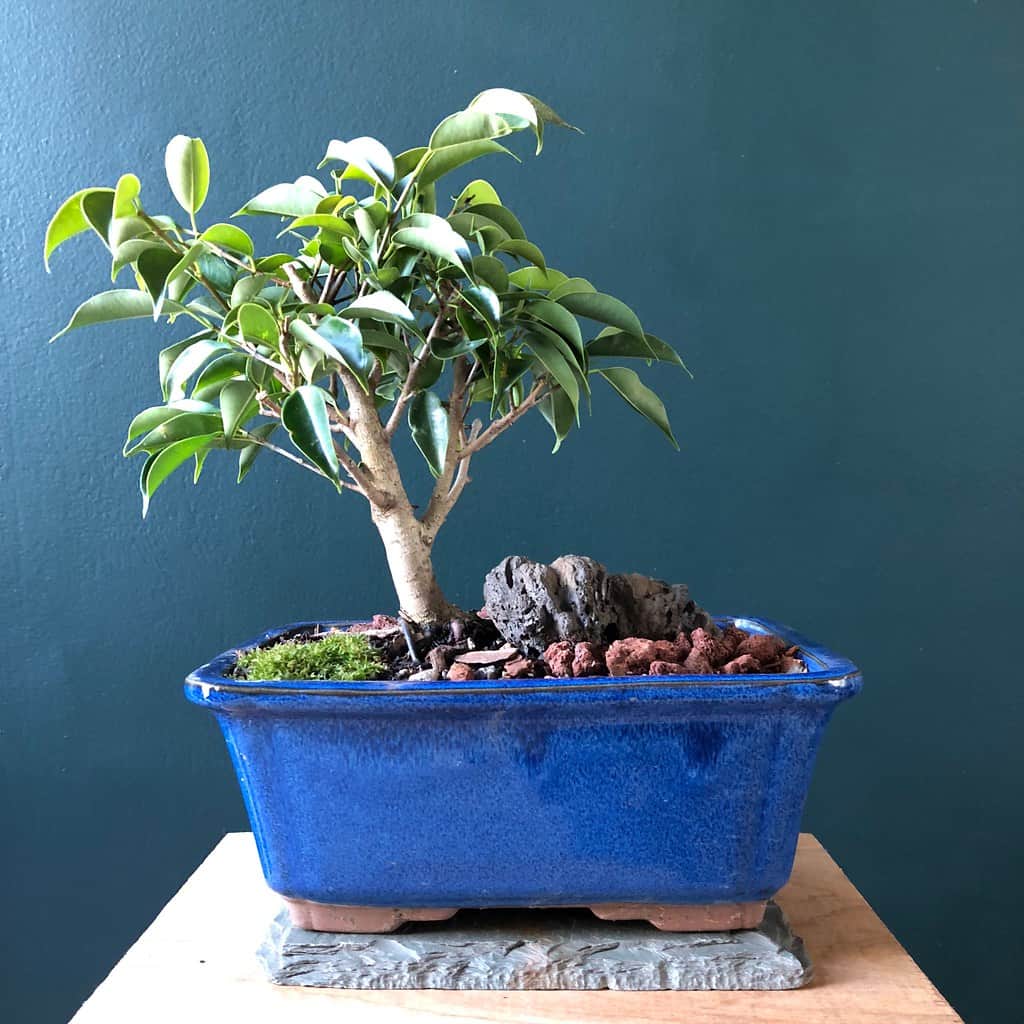
Image source: Taticflickr.com
Weeping Fig bonsai is known for its curved roots and beautiful canopy. It is a good choice for beginners as it grows rapidly and requires less maintenance in comparison to most other bonsai trees. This tree belongs to the ficus family, which is known to produce more oxygen than other bonsai trees.
Banyan Bonsai
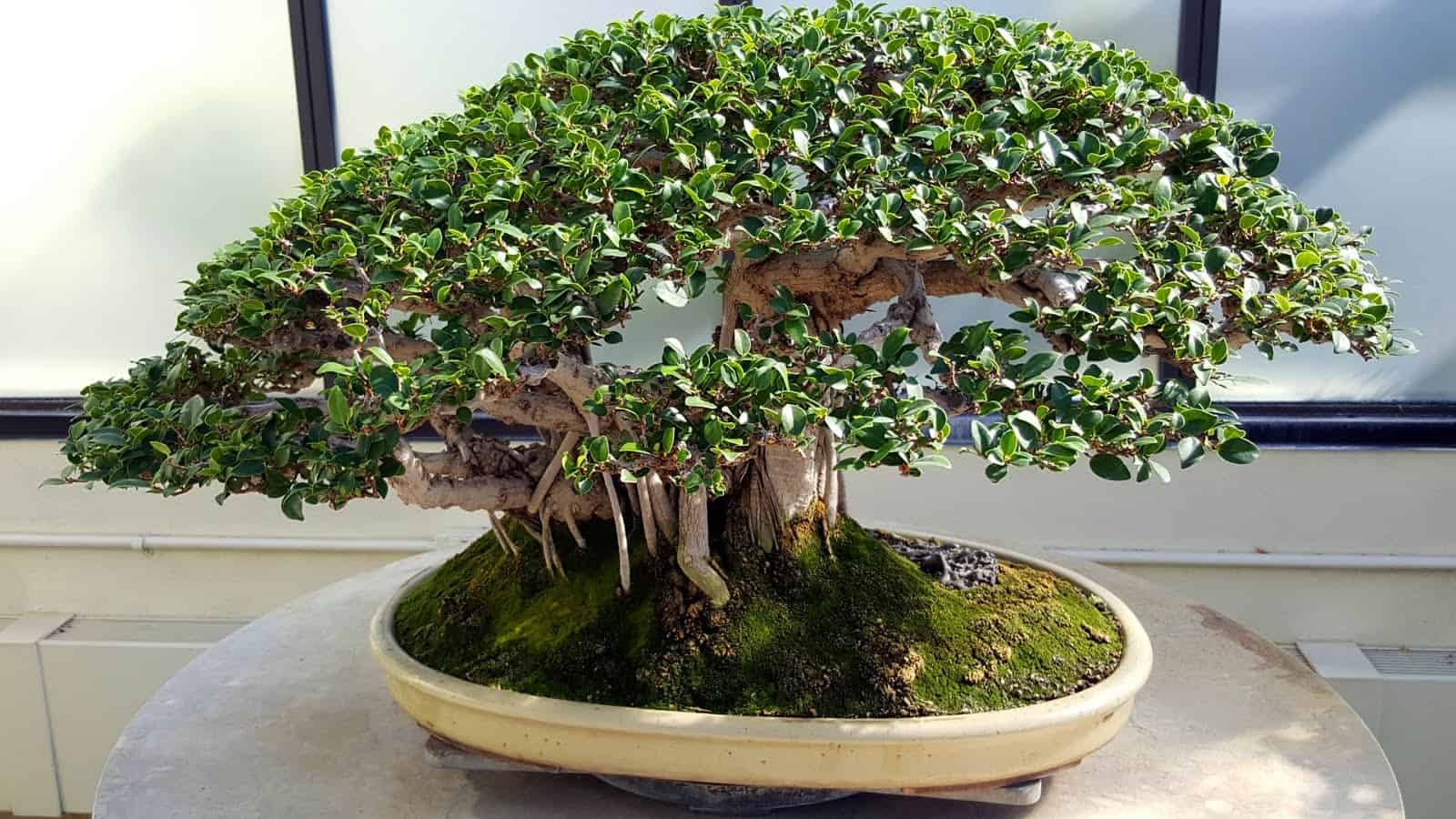
Image source: Blogspot
Banyan bonsai trees are the most majestic bonsai one can ever have in their home. The aerial roots in these trees add up to their beauty. Banyan bonsai trees love a warm climate and frequent watering sessions. One additional thing to consider is that these trees can’t tolerate cold weather, so during winters, make sure they are kept in a warm place.
Pachira Bonsai
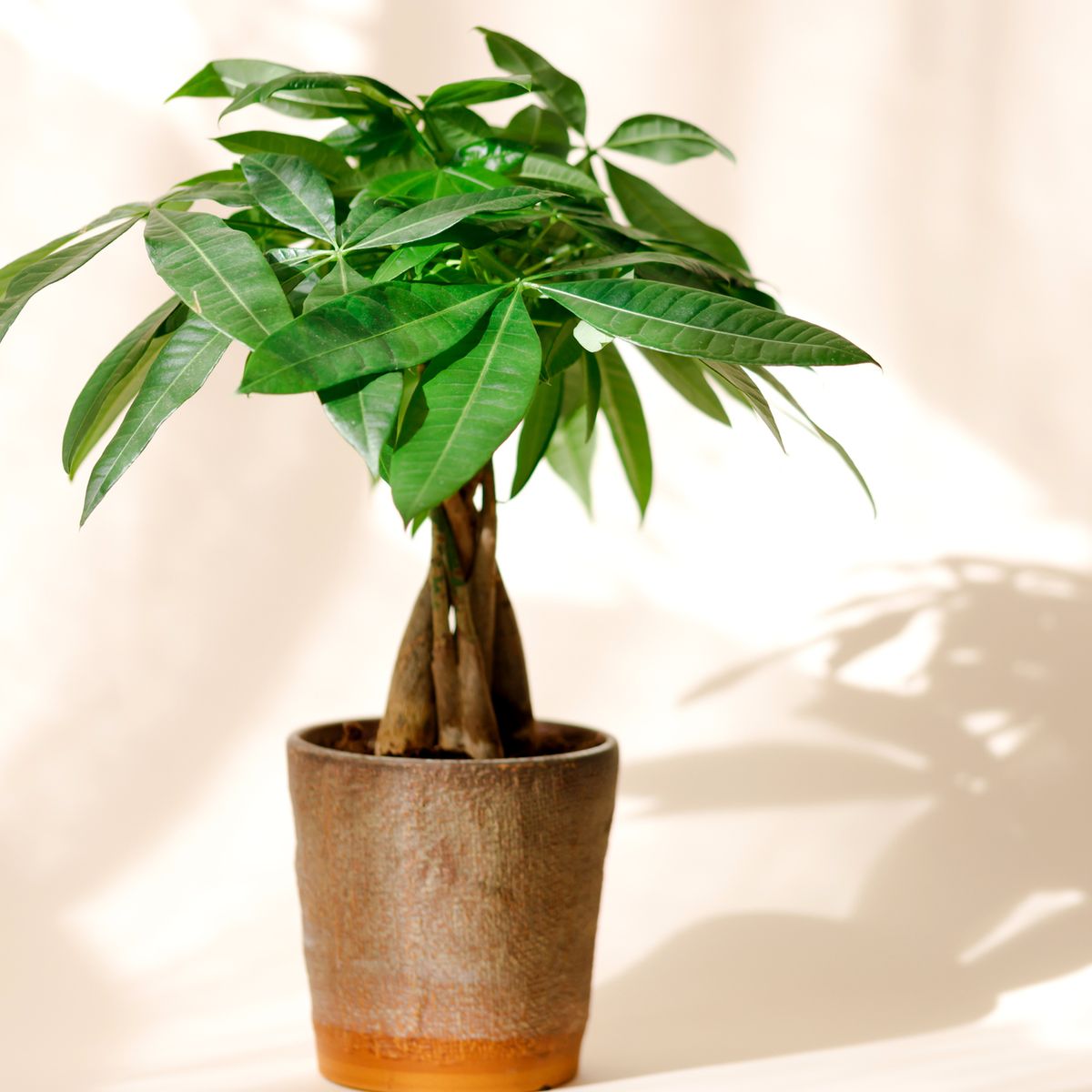
Image source: Hearstapps.com
Panchira bonsai is also known as the money tree. According to Feng Sui, this tree stimulates the flow of money. The leaves of this bonsai represent the five feng shui elements of wood, water, fire, metal, and earth. This tree requires high humidity but maintains a short gap between watering sessions, as overwatering can damage this plant.
| Also read: Money Plants: Benefits, Vastu, growing tips & decor ideas (Shop here!) |
Carmona Bonsai
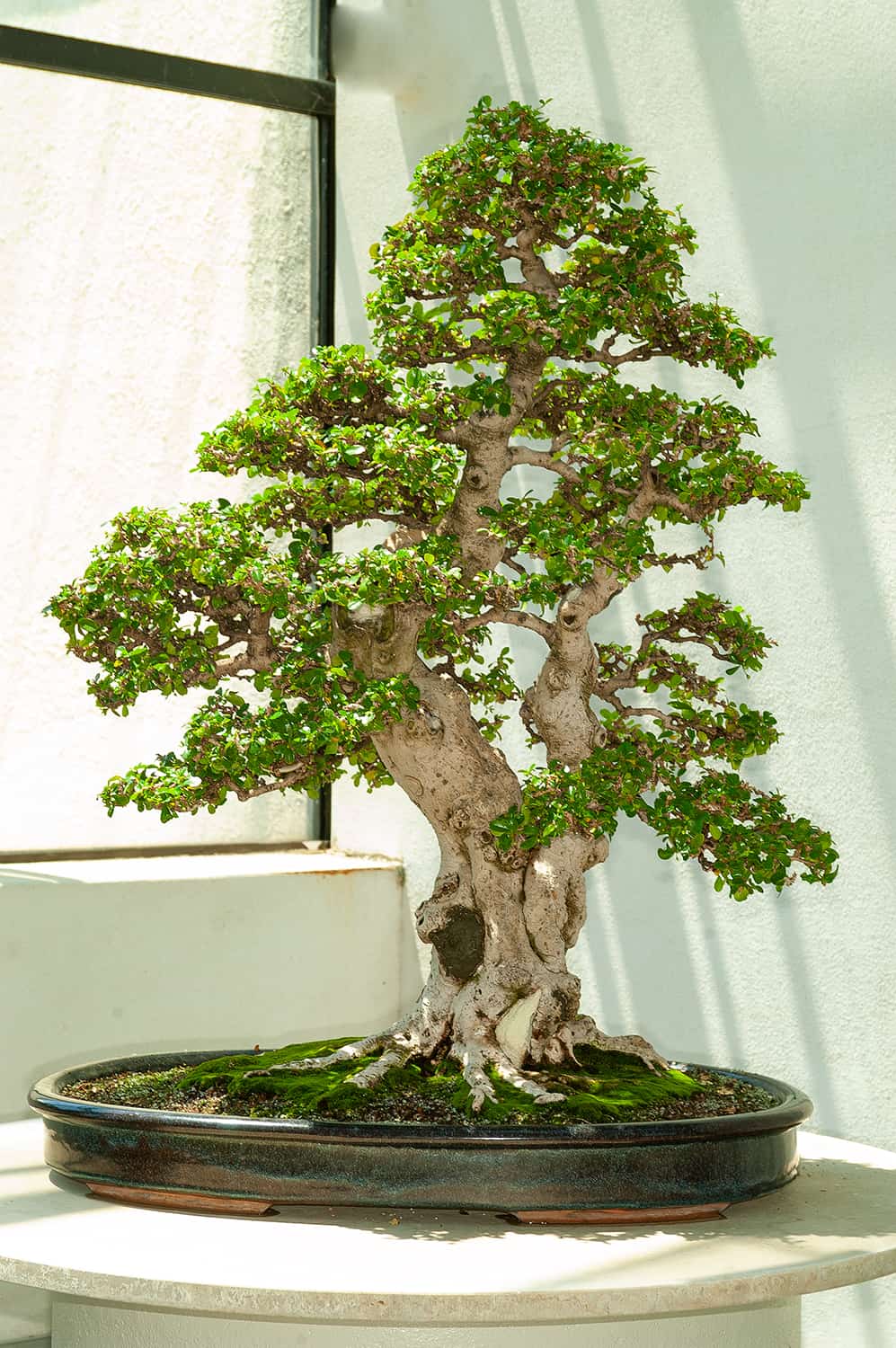
Image source: Pinterest
Carmona bonsai is one of the easiest bonsai trees which you can grow, as it requires less maintenance and grows fast. This bonsai tree comes with dark foliage comprising tiny leaves. The trunk of this tree appears light brown in the initial stage however, once they get mature, the colour of the bark changes to grey, which looks much more appealing. These trees also produce white flowers throughout the year.
Growth and cultivation of bonsai tree at home
Growing and cultivating bonsai requires a good amount of dedication and precision. So, here are some of the elements you need to get right while growing and cultivating bonsai trees at home:
Light
Every bonsai specimen comes with different lighting requirements. Most indoor and outdoor bonsai trees require a good amount of sunlight for several hours during the growing season to flourish. In contrast, some shade-tolerant varieties may stunt their growth under too much direct sunlight. Shade-tolerant bonsai can be placed indoors or under some physical shade to speed up their growth.
Soil
The ideal soil for a bonsai tree should be loose and fast-draining but still able to retain moisture in the planter. Bonsai grows well in soil that is a mixture of volcanic clays containing porous and water-retaining pellets. The Akadama soil variety is well-known for bonsai tree cultivation, and you can easily get it anywhere at a good price. Allowing a large soil volume for a bonsai benefits the tree greatly, especially the roots.
Water
Watering mostly depends on the species, season, and location of the plant. It is recommended to use fresh and clean water for your bonsai whenever the soil feels slightly dry, as this will ensure the plant gets enough water without rotting the roots. You must water your bonsai before sunrise or after sunset to encourage growth.
Fertilizer
Bonsai trees require fertilizers to supplement the elements that are lacking in the soil, mostly throughout their growing season and when they are bearing flowers or fruit. Although different types of fertilizers are available for different functions and species, nitrogen, phosphorus, and potassium remain the base components. You can also mix organic manures like cow dung or bone meal in a bonsai tree planter to increase the efficiency of the fertilizers.
Temperature
All bonsai trees are not similar, so it’s better to choose species suitable for your surrounding climate. Temperature is an extremely important factor in the growth of both indoor and outdoor bonsai trees. Warm-climate bonsai requires insulation during the winter, whereas cold-climate bonsai can thrive even at temperatures below freezing.
Bonsai tree styling and shaping techniques
Bonsai trees can be styled and shaped in various ways to make them look more sophisticated and elegant. So, to know more about the various styling and shaping techniques, read along:
Pruning a bonsai tree
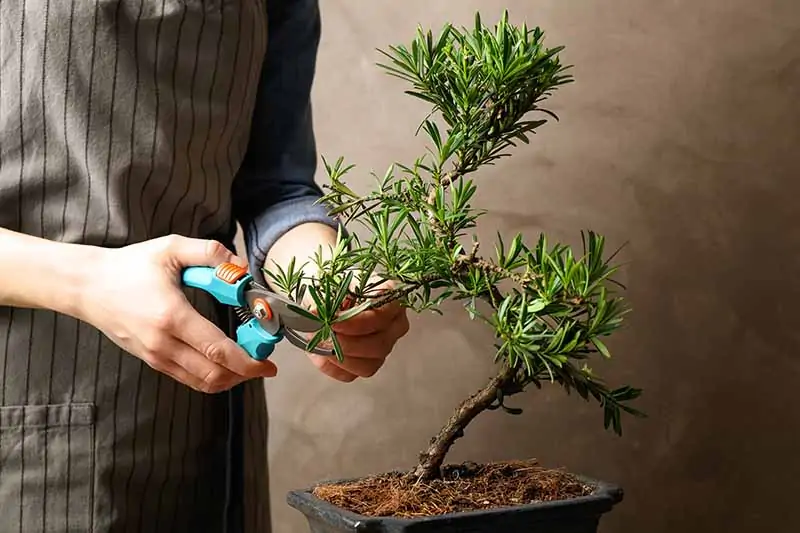
Image Source: Gardener’s Path
Pruning is the most important and frequently used method of removal of certain parts of the bonsai, like branches, buds, etc., to style and maintain its shape. There are two types of pruning: maintenance pruning, which helps to retain and refine the existing shape of the bonsai, and structural pruning, which gives the tree its basic shape and style. Pruning is required about 2-3 times a year, which not only encourages growth but also improves the quality of the bonsai from an aesthetic point of view.
Wiring a bonsai tree
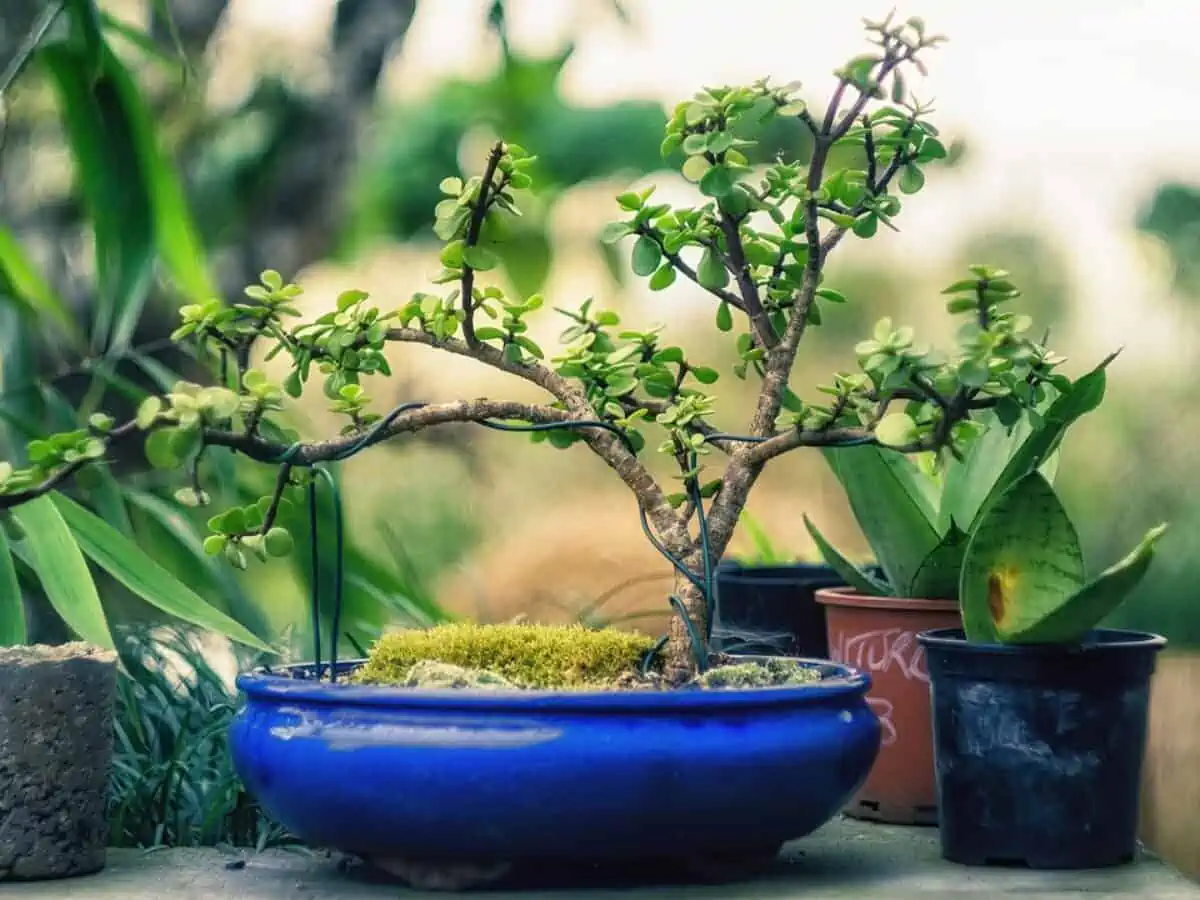
Image Source: Gardening ABC
Wiring refers to the process of wrapping copper or aluminium wire around branches, trunks, and shoots of bonsai to create the desired form and detailed branch and leaf placements. For this, you first need to wire your young plants tightly for 6-9 months or one growing season, then bend them in the desired direction to influence their growth and shape. Unwire your bonsai once its shape solidifies through thickening and lignification.
Pinching a bonsai tree
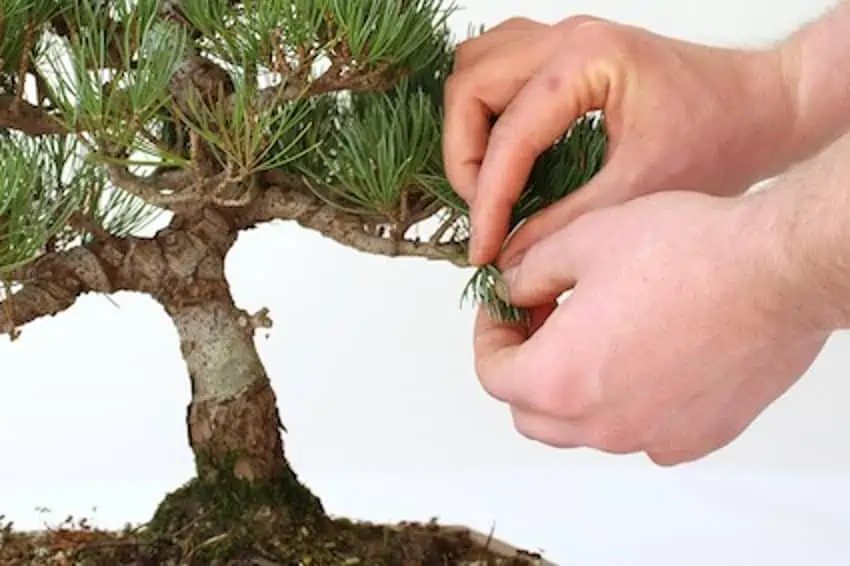
Image Source: Bonsai Empire
Pinching is the process of removing shoot tips with your fingers to achieve finer branching of the branch pads. This process is mainly for well-developed bonsai to restrain them from growing tall while making the crown denser and more compact. But keep in mind not to use it for pre-bonsai, as their basic structure is still in progress, and it is too early for this process.
Air-layering a bonsai tree
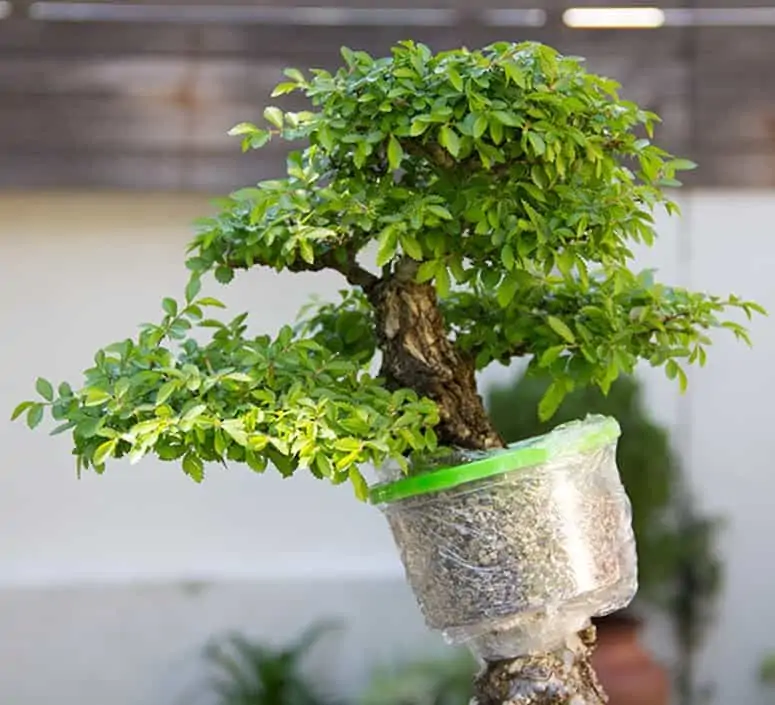
Image Source: Bonsai Tree
Air-layering is an advanced technique to improve the quality of bonsai trees through vegetative propagation. It helps improve the proportion of a bonsai by creating a great root system, correcting trunks with malformation, and obtaining raw materials for new bonsai cultivation.
Clamping a bonsai tree
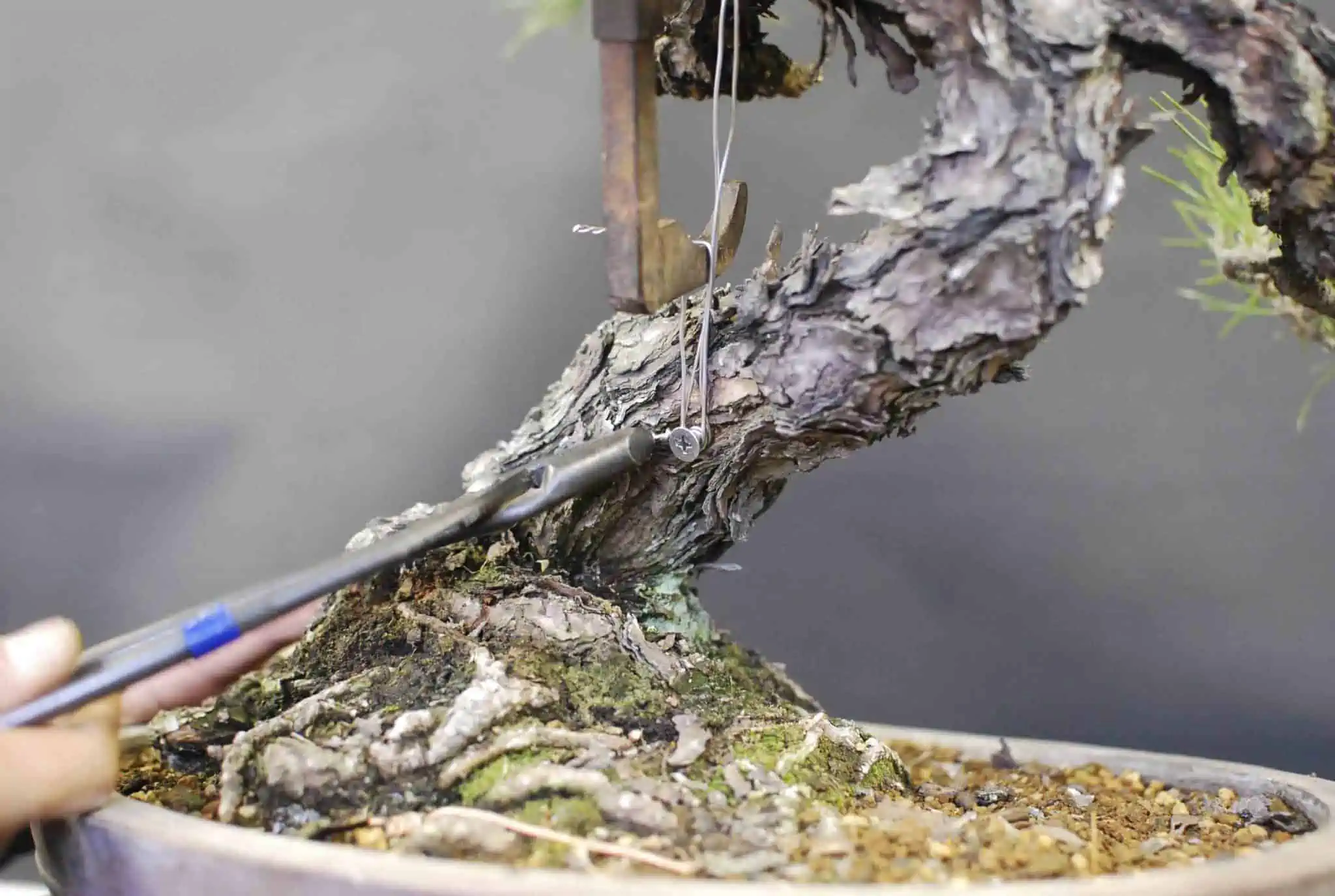
Image Source: Bonsai Tree Gardener
Clamping is the process of using screw-based clamps to shape the trunks and branches of larger species of bonsai. This process is more efficient than wiring as it can straighten or bend a part of a bonsai with much greater force. However, remember, the price of clamps is more than wires and can cause damage if tightened too much around the bonsai tree.
Grafting a bonsai tree
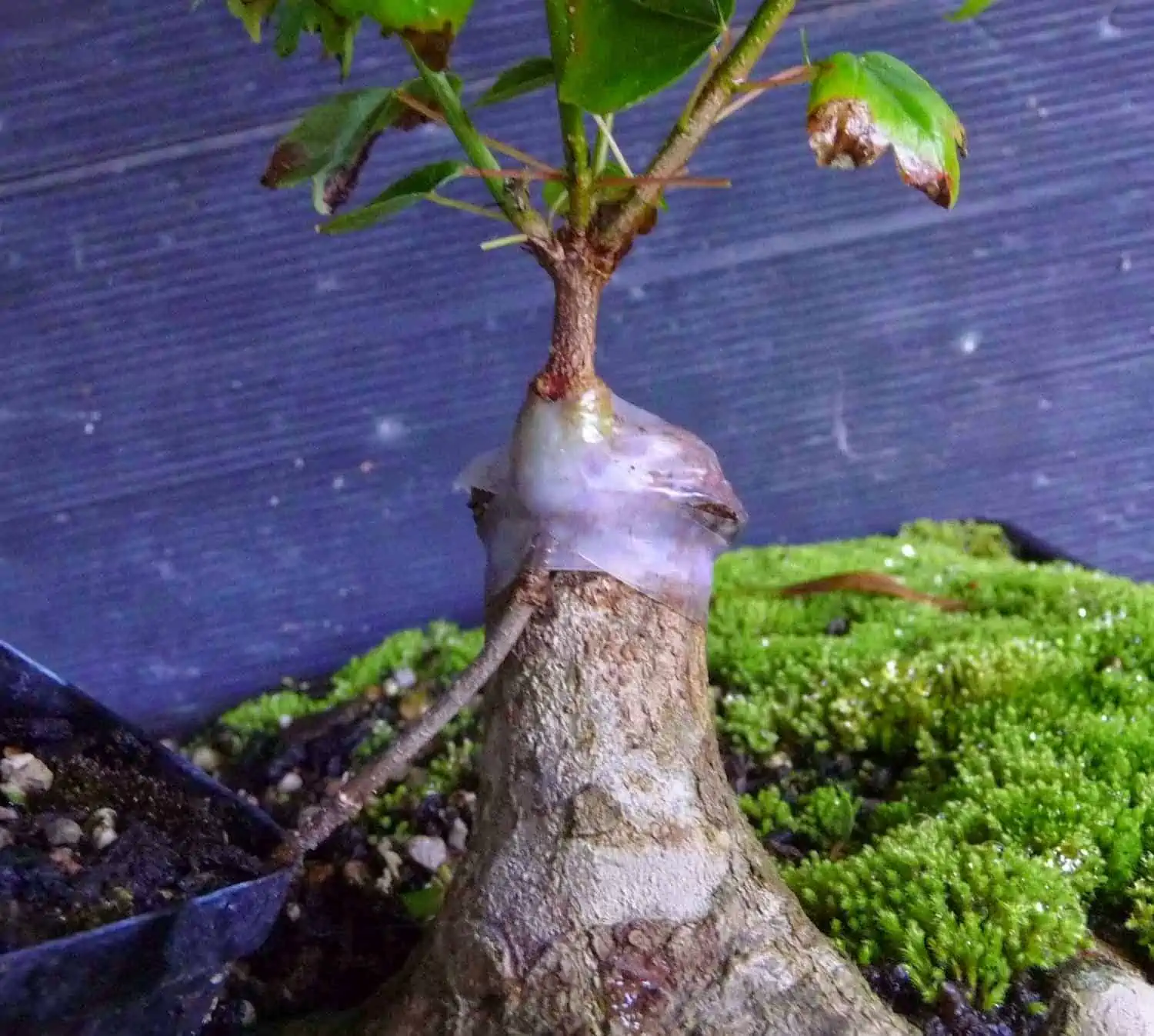
Image Source: Stephen Cullum’s Bonsai & Pottery
Grafting introduces a bud, branch, or root to an already prepared area under the bark of the tree. Some of the more popular grafting techniques are thread grafting, branch grafting, and bud grafting. This method allows you to add branches wherever they are needed to complete a bonsai design or successfully grow your favourite plant species as a bonsai.
Caring for bonsai trees
Bonsai trees require a good amount of care and attention to grow and remain healthy. So, here we have listed some of the most important caring methods that you can’t afford to neglect:
Placement
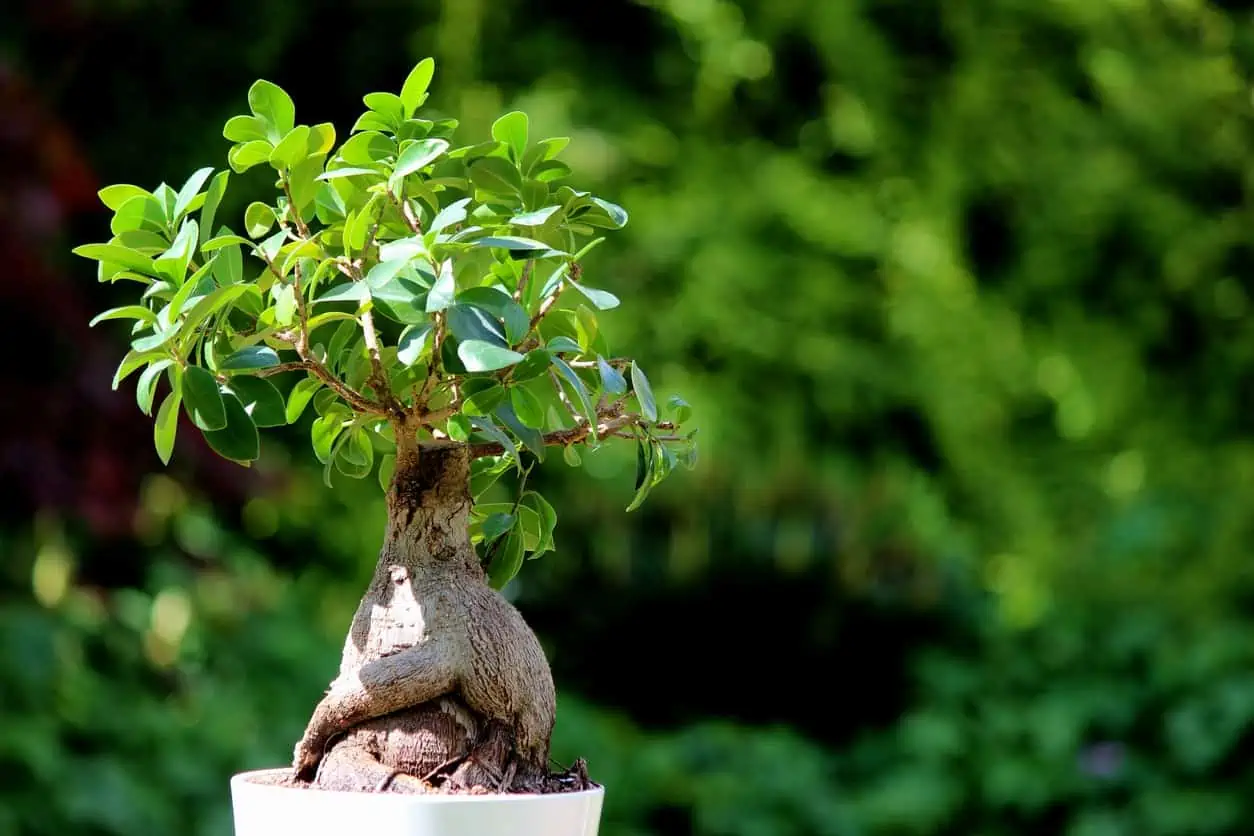
Image Source: Bob Vila
The bonsai tree should always be placed outdoors or in a planter according to its favourable climatic conditions. These bonsai trees can be placed on a balcony corner or window under the sun for 6-8 hours, whereas one-grown outdoors is better left outside in a bright spot. Placement is important in terms of its exposure to the sun, without which weak foliage and other problems can arise.
Repotting
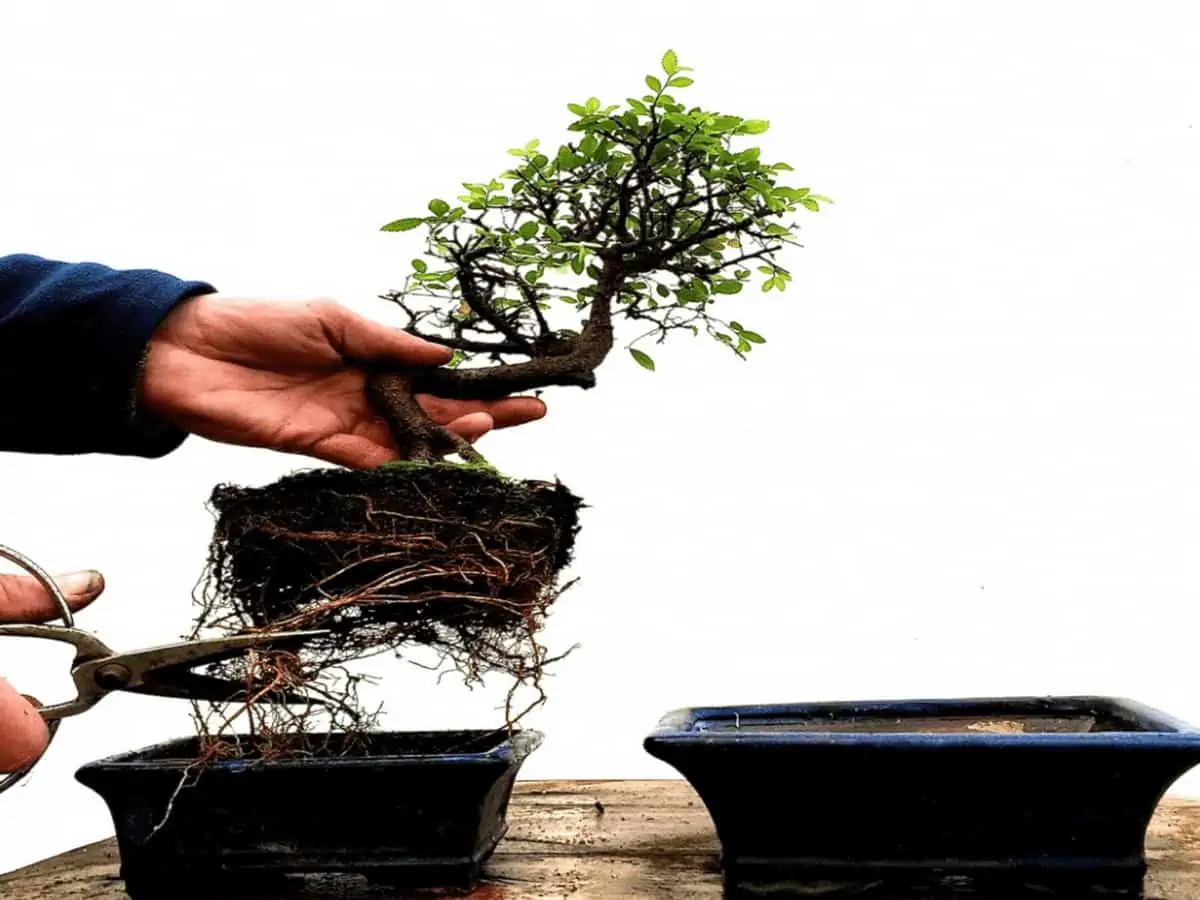
Image Source: Abana Homes
Bonsai trees require repotting mostly every two years when exposed roots are seen encircling the bottom of the pot. All you need to do is take the plant out, cut the excess roots, and place it in the same pot after changing the soil. Repotting is essential to maintain the proper health of the plant and generally depends on the species of the bonsai tree and the type of planter used.
Pot selection
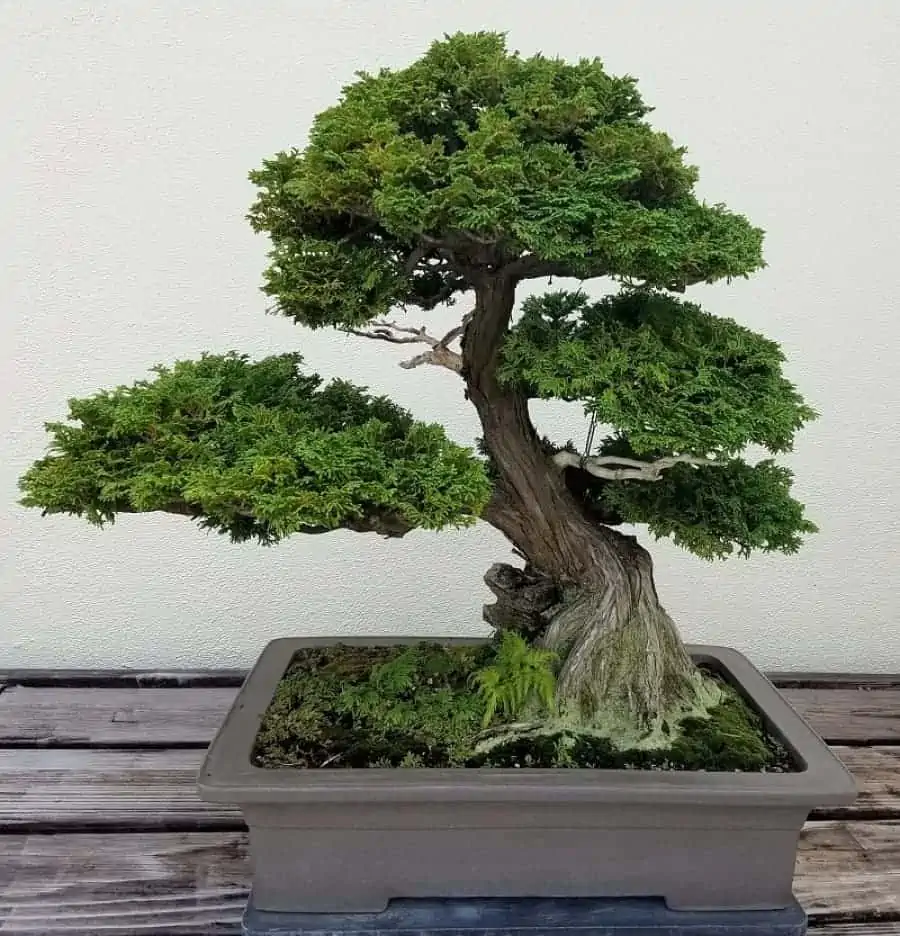
Image Source: This Lady Blogs
If certain conditions are met, any pot can be used as a bonsai pot. A perfect bonsai pot should have drainage and wiring holes, be made of ceramic or porcelain, and have the perfect depth. There are several planters available in the market at a giveaway price, so selecting the perfect pot is extremely crucial, as the growth of these bonsai trees depends on it.
| Also see: Buy modern indoor planters & pots online in India @ up to 65% off |
Pests and diseases
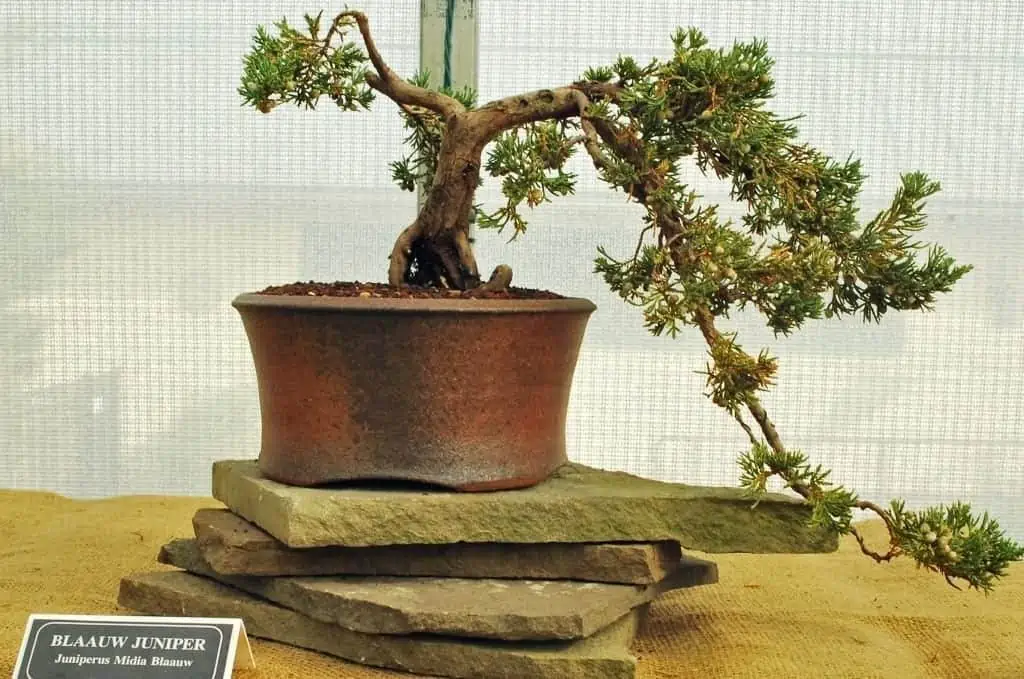
Image Source: Bonsai Tree Gardener
Bonsai trees are under constant threat of pests that affect both their full-grown counterparts as well as those commonly grown in indoor conditions. Some insects that cause harm are caterpillars, ants, aphids, spider mites, mealy bugs, etc. Moreover, fungal and bacterial diseases are very common in bonsai. To avoid such problems, you can use garden insecticides, pesticides, or organic sprays.
| Also read: How to create a flawlessly landscaped home and garden? (41+ ideas) |
Bonsai tree decor ideas (Image gallery)
-
Image Source: Backyard Boss
-
Image Source: Abana Homes
-
Image Source: Bonsai Empire
-
Image Source: Bob Vila
-
Image Source: Balcony Garden Web
-
Image Source: Bonsai Tree Gardener
-
Image Source: Unsplash
-
Image Source: Bonsai Starter
-
Image Source: Pinterest
-
Image Source: Homegrown Garden
| Also see: 49+ home decor ideas for a trendy & timeless design update |
Watch this video: How to create a Bonsai tree (9 mins 44 secs)
Refer to the video below to learn the way to create a bonsai tree:
FAQs
What tools do I need for bonsai gardening?
We have listed some of the must-have bonsai tools below have a look at them:
- Pruning shears – To trim the shoots.
- Root hook – To free up soil during transplantation.
- Training wires – To change the shape or direction of a part.
- Wire cutters – To cut wire symmetrically
- Knob cutters – To shape or remove wood from a section.
- Concave cutters – To flush cut branches
- Root rake – To stir up soil for aeration
How long do bonsai trees live?
These trees can live even more than 100 years with proper care and favourable conditions.
Where should I put a bonsai tree in my house?
A South-facing window is the only place in most homes where an indoor or outdoor Bonsai tree will thrive, as plenty of light is essential for its good health.
How often should I repot my bonsai plant?
This greatly relies on the bonsai tree species, size of the original pot, age, and whether it’s grown outdoors or in a pot. However, young trees should be replanted every 2 years, while older trees should be replanted every 3 to 5 years.
Can bonsai plants be propagated from cuttings?
Yes, these trees are popularly propagated from the cuttings of the mother plant.
Conclusion
Bonsai trees become the center of attention in any living space. They draw life and energy to your house and create a positive environment. Some bonsai can be cultivated to fit in any given space, like your desk, living room, bedroom, etc., and can be carried from one place to another.
There are a variety of evergreen coniferous and deciduous hardwood trees that can be trained for bonsai at a minimum price quote. Moreover, most bonsai trees are beginner-friendly as they are easy to grow both indoors and outdoors and require minimal maintenance. All they need is some sunshine, daily watering, occasional fertilizing, and repotting every few years to live healthily and add to the aesthetics of your home.
Bonsai trees make a great and unique home decor element when grown indoors and shaped properly. Styling and shaping also help bonsai understand their nature and bring out their unique qualities. Not only that, they require styling and shaping on a regular basis to bear fruits and flowers.
Now you know all about these trees and the growth and styling techniques required to maintain their shape. So, evoke a positive atmosphere and bring home a bonsai tree at a pocket-friendly price from our above-mentioned shopping recommendations.
*The featured image used in this article is from Treehouse


